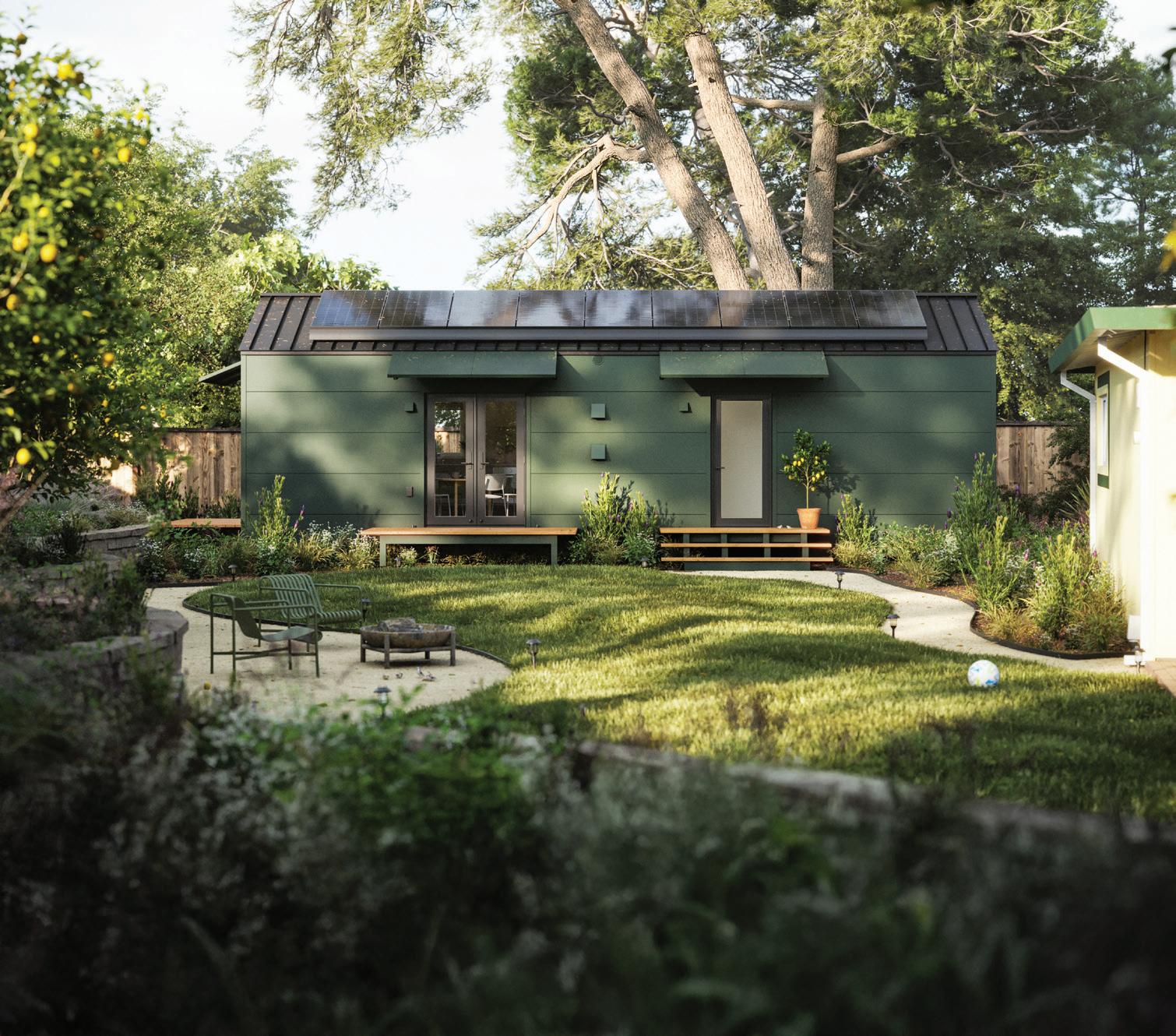
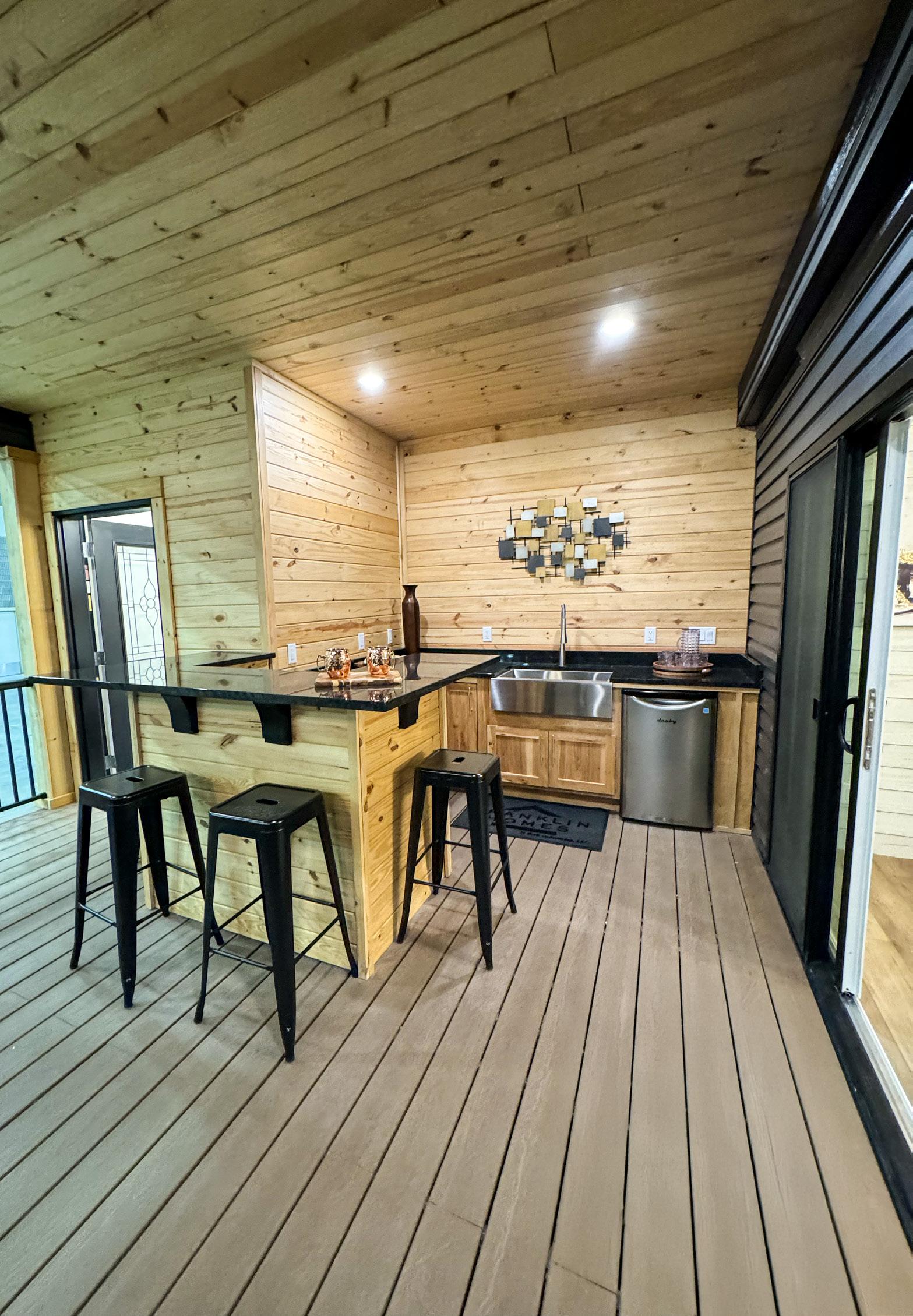
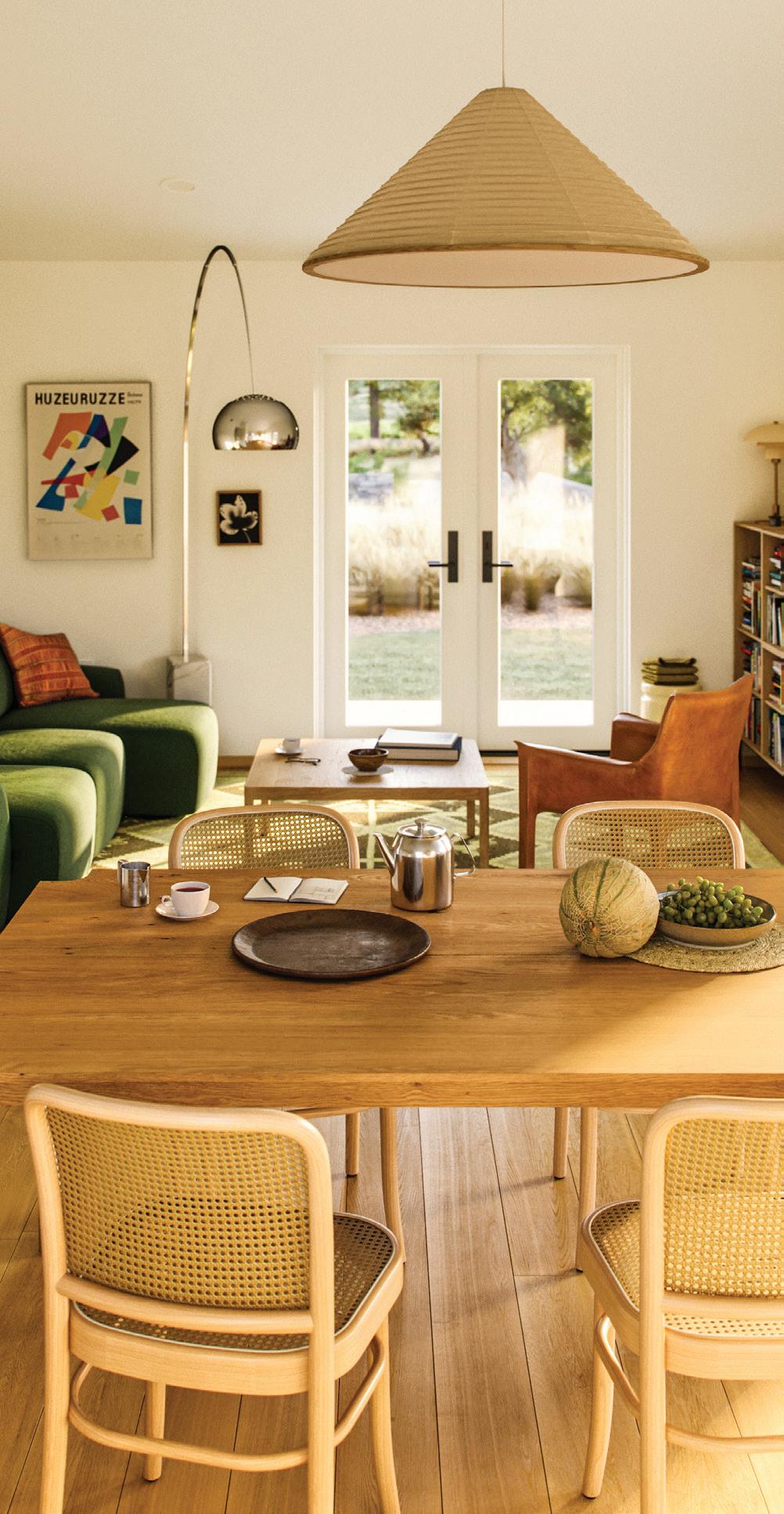
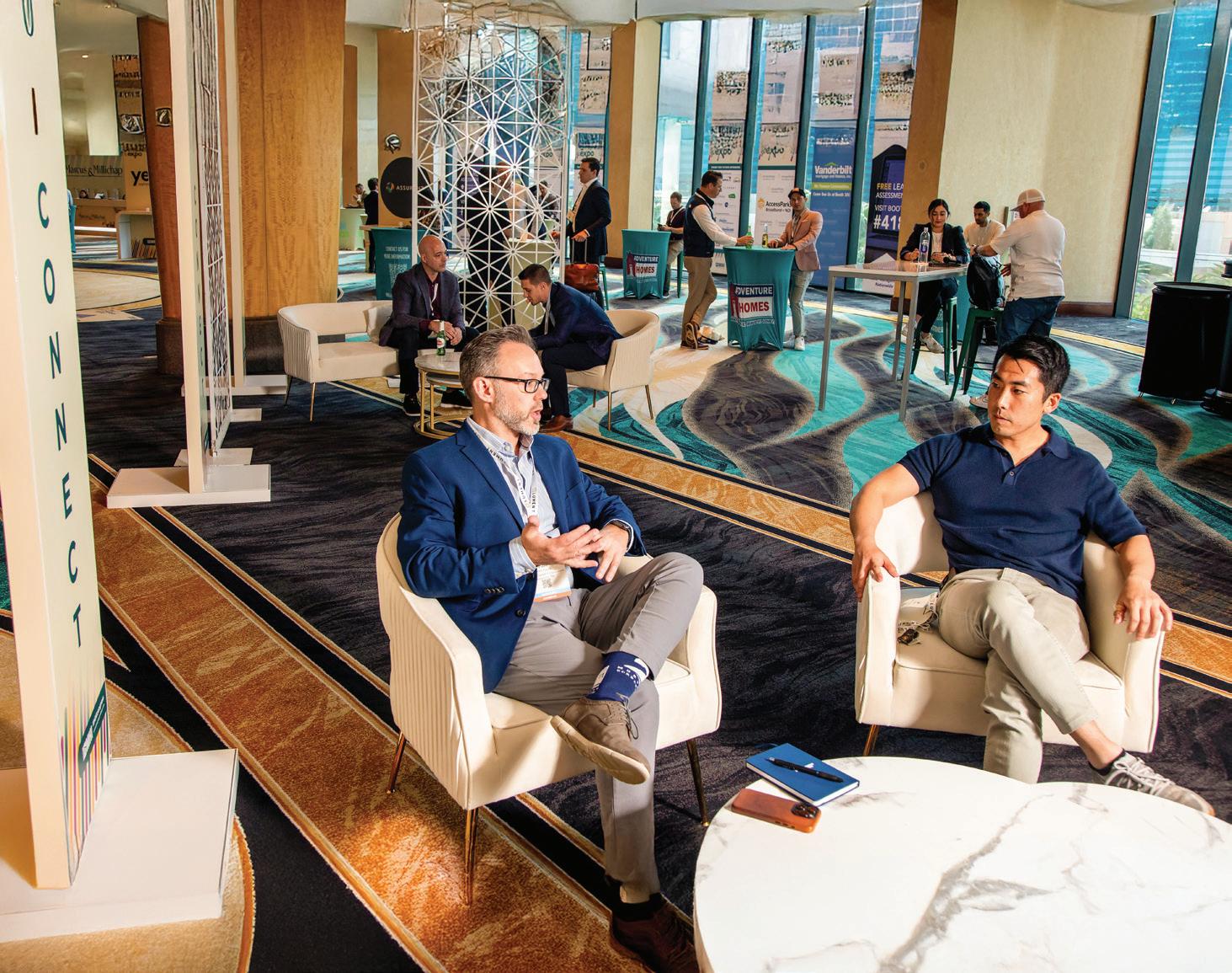





DESIGNED TO HELP YOU CLOSE MORE LOANS ZIPPYFAST!
• Focus your sales teams with lender qualified leads




• Communicate with your loan team online
• Enjoy a dedicated Community Guide to support your success


• Multiple lending options to accommodate every community strategy
• Bilingual services and ITIN lending






























































































































































Award-Winning Home Designs Expert Market-Specific Sales Teams






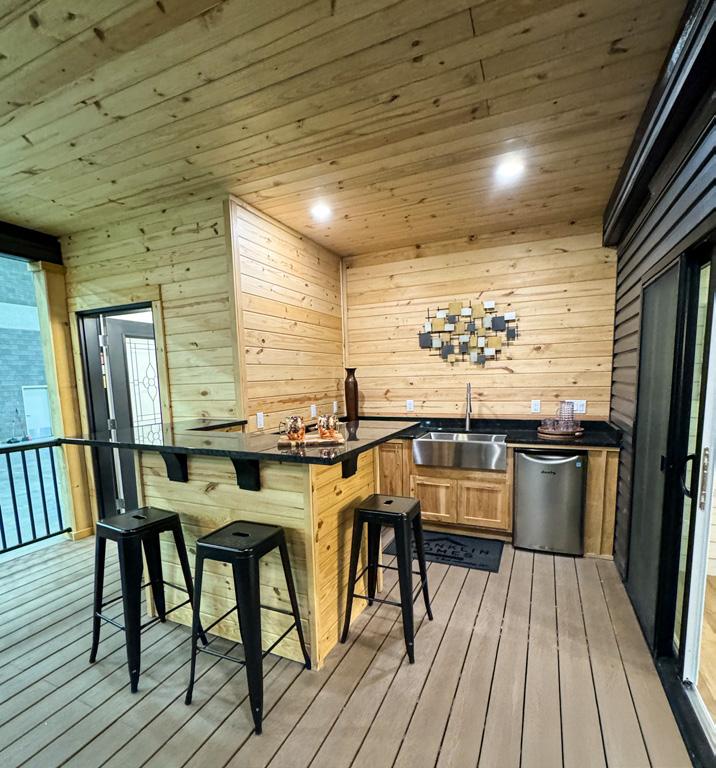
PUBLISHER Patrick Revere | patrick@mhvillage.com
SENIOR GRAPHIC DESIGNER Merit Kathan | merit@mhvillage.com
CONTRIBUTING
EDITOR George Allen | gfa7156@aol.com
COVER PHOTOS COURTESY OF Samara, Suzanne Felber, MHI
EDITORS Dawn Highhouse | dawn@mhvillage.com, Sean Vichinsky | sean@mhvillage.com
CONTRIBUTORS Suzanne Felber, Linlin Liang, Ryan Kilpatrick, Rachel Siegel, Alexandra Stone
ADVERTISING SALES (877) 406-0232 advertise@mhvillage.com


Patrick Revere is vice president of communications at MHVillage and publisher for the MHInsider magazine and blogs. His background is in print news, language, and communication.
Welcome to the State of the Industry edition, a little earlier this year to coincide with MHI’s Congress and Expo in Orlando, providing a little bit of summer and possibly poolside or beach reading for our professional audience.
Yes, it’s one of your favorite editions, with all of the industry trends and statistics, as well as commentary about the most talked-about topics. There is plenty to talk about this year, with attainable housing in such high demand. Each day, it seems, provides a stream of housing news, from D.C. to the state capitals, and from Wall Street to Main Street.
The regulatory climate and all of its changes, continued zoning challenges but opportunities as well, home finance stabilizing after years of near-free money,
and the realization that stakeholders on all levels are seeking off-site solutions versus the industry courting them.
Manufactured housing is in a good place, and getting better.
Shipments again are on the rise. New technologies are making the home sales process more efficient. And partners are popping up around every corner. The state of the industry now is in a place to put the best foot forward and make the key changes necessary — such as expanded financing, improved zoning, and updated uses of the latest technologies — to aid customers and the market as a whole, in new developments, with homes on owned property, and within the community living model that so many residents enjoy. MHV
Have Industry News, Events, or Editorial Content You'd Like to Share?
Contact our Publisher, Patrick Revere at (616) 888-6994, or patrick@mhvillage.com




Iowa Community Changes Hands
Southland Park in Des Moines, Iowa, has been purchased by Maplewood Communities of Boca Raton, Florida. Reports indicate the purchase price at $5.3 million. The community was developed in 1972 and the purchase includes approximately 20 acres with 90 homesites.
Michigan Owner Acquires Texas Community
RHP Properties, based in Michigan, has purchased Pecan Plantation from FollettUSA. The community, with 226 homesites, is in La Porte, Texas, and includes a clubhouse with a pair of swimming pools, fitness center, and outdoor family amenities.
Michigan-based community owner Sun Communities has sold its marina and yacht servicing business to Blackstone for a reported $5.6 billion. The REIT reported its intention to reduce debt and focus on core segments, notably manufactured housing and RV.
Three Indiana Properties Sold
Brookfield Estates and East Indy Estates, in Indianapolis, and Huntington Estates in Huntington, about 100 miles away,
recently were purchased by GMF Group. Together, the communities have more than 300 homesites.
Built Prefab, builders of modern modular housing, has acquired Lake Country Modular, a provider of attainable, high-quality manufactured and modular homes. James Rosowsky, CEO of Built Prefab, said the acquisition “significantly enhances Built Prefab’s product offerings, enabling it to deliver more move-inready housing options and innovative solutions” to meet the growing demand across Western Canada.
The Propane Education & Research Council from its 2024 Propane Construction Research Program revealed new research »

























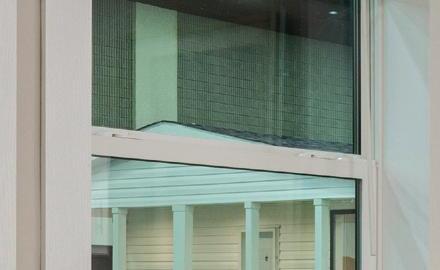









that shows propane-powered systems collectively reduced an average household in carbon dioxide by 35 percent. The program also found that choosing sustainability doesn’t necessarily mean higher costs, as 68 percent of builders reported that propane-powered homes cost the same or less to build than all-electric alternatives. PERC’s information is sourced from nearly 2,000 projects across 23 states — including first-time participation from South Carolina, North Carolina, Minnesota, and Arkansas — and the program continues to demonstrate propane’s contributions to creating healthier homes. “Builders across the country are proving that propane can produce high-performance and energy-efficient homes while maintaining affordability,” said Bryan Cordill, director of residential business development at PERC. “Year after year, this program shows propane’s ability to reduce emissions and how it will continue to support the growing consumer demand for sustainable housing.”
A new Massachusetts state law went into effect in February that allows property owners across the state to build accessory dwelling units, or ADUs — small, secondary homes that may be attached or detached from their main single-family house. The homes create affordable living spaces for family members or renters. The state hopes the new law will increase the housing supply, bringing down the high cost of housing throughout the state.
New Jersey-based UMH Properties has opened River Bluff Estates, a manufactured home community in Memphis, Tennessee. Located adjacent the city’s cultural and entertainment hubs, River Bluff Estates is a prime lifestyle offering with beautifully designed manufactured homes from Champion, Clayton, and Skyline. By early 2026, River Bluff Estates will introduce an array of amenities to enhance the community experience, including a playground, clubhouse, dog park, splash pad, pickleball courts, and a swimming pool.
Champion Appoints New Board Member
Champion Homes added to its board of directors with the appointment of Mary B. Fedewa as a new independent director. Fedewa is an accomplished leader in the real estate industry with more than 30 years of experience in finance and capital markets. She co-founded STORE Capital, a real estate
investment trust that invests in single tenant operational real estate, and previously was managing director of acquisitions at Spirit Finance Corporation.
Newmark Hires Finance Professional
Matt Herskowitz has joined Newmark as a director in the Southern California office. Herskowitz is joining Robert Younkin and Garrett Meyers, an industry leading team that combines expertise in conventional multifamily and manufactured housing community finance. After 10 years at Wells Fargo, Herskowitz will continue to originate community and conventional multifamily financing with a focus on Fannie Mae and Freddie Mac lending.
Industry Mourns the Loss of Alabama MH Professional
Aaron Anthony Hopson of Land Home Financial was laid to rest in February. He was 55. Mr. Hopson served as a manufactured home loan originator, earning widespread respect for his professionalism, integrity, and commitment to excellence. A visitation and services were held Feb.22 at Old Union Baptist Church.
Industry Leader Bill Blevins Passes Away

James William “Bill” Blevins passed away on Feb. 20. A lifelong Nashvillian, Mr. Blevins attended Montgomery Bell Academy and earned a degree in business administration from the University of Tennessee. He started with his father in the wholesale division of Blevins Popcorn, and went into business for himself. In 1971, he purchased a building supply business that he renamed Blevins, Inc., an entity he operated within the manufactured housing industry for more than 50 years. Mr. Blevins grew the company to 25 locations. He was known for his sense of humor and curiosity. Mr. Blevins was a great conversationalist and loved meeting new friends and hearing about their lives. His outlook on life, love of service, and dedication to family and community helped shape so many of the people around him. He is survived by his wife Melba and children Brad (Kim), Jill Blevins Keogh (Brendan), Clay, and seven grandchildren he adored. MHV


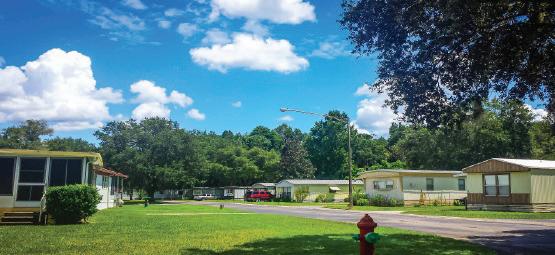
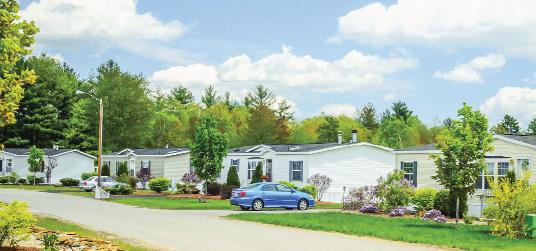


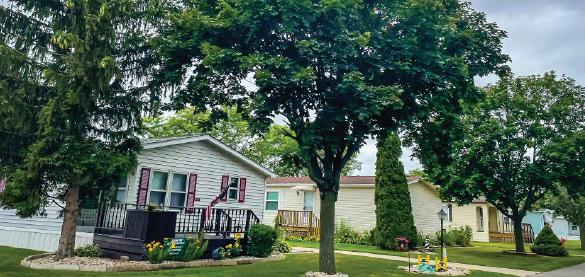


















By Patrick Revere
Among the many data points market watchers track is the health of the labor market, which has shown a “worrying” trend in recent months.
The Challenger, Gray & Christmas monthly report on anticipated job cuts, released in February, showed plans for 172,017 positions to go away, more than a 100 percent increase year over year, and the largest monthly total since 2009.
Monthly labor numbers from the U.S. Bureau of Labor Statistics show job gains on par with expectations, but economists are taking a reserved opinion as much of the DOGE-driven job losses are yet-to-be-realized, likely to be seen in second quarter to mid-year data.
Economists are not alone in holding their breath.
Production and orders are up slightly, home sales are flat, though starts jumped double digits. International trade is suf-
fering, retail is down, and local businesses seem to suffer most. Where does that leave the consumer? Orders and large purchases are not equal to consumer confidence.
Just how resilient is the consumer?
The real wait-and-see comes in the form of what otherwise would be regulatory whiplash.
In what is normally a formal, even staid process, the climate has gone the way of the “disruptive tech” approach; break it to fix it.
But what the State of the Industry comes down to, in fact, what the entirety of the economy is reliant upon is the resiliency of the customer. The customer is the marketplace, and what we’ve seen is a steady consumer confidence over time that will remain and thrive when the waters clear.
Economists Brian Wesbury and Robert Stein at First Trust Advisors told their readers the U.S. is “probably not” in a recession, even if it looks like it.
“Plugging the surge in imports into our models suggests negative growth for Q1, which was confirmed by the Atlanta Fed’s GDP Now, which is tracking -2.8 percent growth in Q1,” the pair at First Trust stated. “But just because we expect a negative reading in Q1 doesn’t mean a recession is here. The data are volatile for many reasons. For example, unusually cold winter weather plus California fires probably held down retail sales and homebuilding.”
Through all of this and since 2016, consumer confidence remained near 90 if not over 100 (100 is the median in 1985). This coming out of the lowlows of the 2009 recession and through the pandemic and the abundant, historic natural disasters.
“With headwinds, tailwinds, and side winds hitting all at once, the data are not very clear.
While we do expect the U.S. to face an eventual recession, a negative Real GDP growth report for Q1 is not yet defining evidence. It is a reason to be concerned, but we will look elsewhere for confirmation.”
— FT Advisors
The undeniable truth, even if the economy does enter recession, is that the market demand for what the manufactured housing industry does will not wane any time soon. Policy changes, tariffs, and natural disasters aside, the gen-
eral population still needs an attainable home. While the market may slow for a bit, inventory is only vaguely improved and generations of people continue to need their new home, their next home, their second home.
Berkadia, in its annual manufactured housing report, said the increase in overall shipments from 2023 to 2024 and the sizable HUD Code updates in September are encouraging developments. It said the industry will continue to perform well despite the headwinds.
“With the significant increase in manufactured home production in 2024, the sector is gaining traction due to its affordability, energy efficiency, and faster construction times… 2025 will further reshape the outdated perception of
manufactured home communities and address housing shortages from more embracement of the evolved product,” the Berkadia report stated.
The industry’s most promising growth areas continue to be in the Sun Belt locations like Texas, Arizona, Florida, and New Mexico.
“The manufactured housing industry is poised for a bright future, driven by innovation, affordability, and growing demand for sustainable living solutions,” Berkadia Senior Managing Director Kevan Enger said. “More and more, local officials are seeing things our way. Why wait to build and endure weather and all the added cost that comes with it? The industry has what cities need, the industry has what renters need, what retirees need, what the workforce needs.”MHV

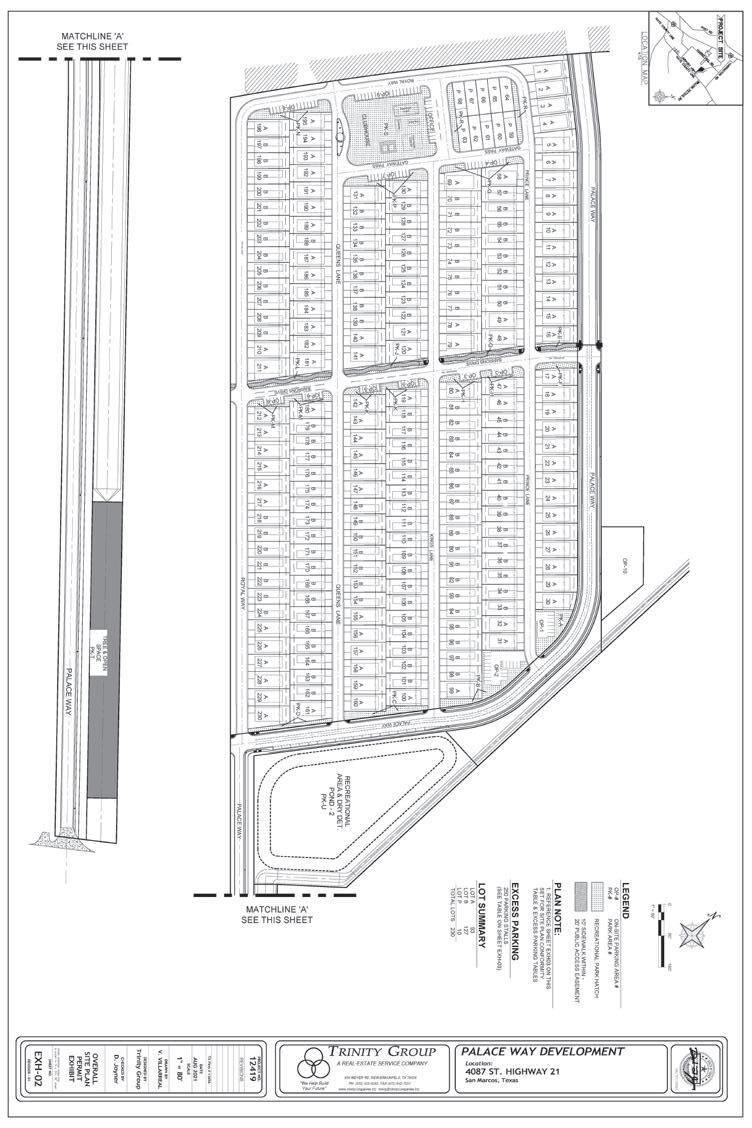
Monday, May 5 — Wednesday, May 7, 2025
Orlando | Rosen Shingle Creek Resort
The national trade show where manufactured housing professionals can obtain the knowledge and resources necessary to excel in today’s housing marketplace. Attend top-quality educational programs with powerful speakers and visit the exhibit floor to see the latest products and technologies.
Wednesday, May 14 — Thursday, May 16, 2025
Fort McDowell, Ariz. | WeKoPa Resort
MHCA offers a prime locale to meet, exhibit, and shop for the latest industry developments and trends. With awe-inspiring views and a day of great golfing, Manufactured Housing Communities of Arizona invites manufactured housing professionals for a productive three-day outing in the desert.
Date TBD
Washington, D.C. | National Mall
The U.S. Department of Housing and Urban Development each year hosts the Innovative Housing Showcase to provide
a large, public display of innovative designs, structures, and advances in housing, particularly with a mind toward energy-efficiency, durability, and availability.
Thursday, June 12 — Friday, June 13, 2025
Orlando | Rosen Shingle Creek Resort
FMHA is in Orlando with its annual convention, where members and guests will hear an economic update and a review of recent and pending legislation, and will learn about other trending topics in Florida and around the country.
Sunday, June 22 — Wednesday, June 25, 2025
Myrtle Beach, S.C. | Resort in Kingston Plantation
MHISC is meeting at the Resort in Kingston Plantation for its annual summer gathering. It will host a golf tournament, committee meetings, and a state hall of fame awards ceremony and dinner. Join other manufactured housing professionals at the beach for learning and industry development. If

For 25 Years
We’ve remained the only software built specifically for manufactured housing by industry veterans.
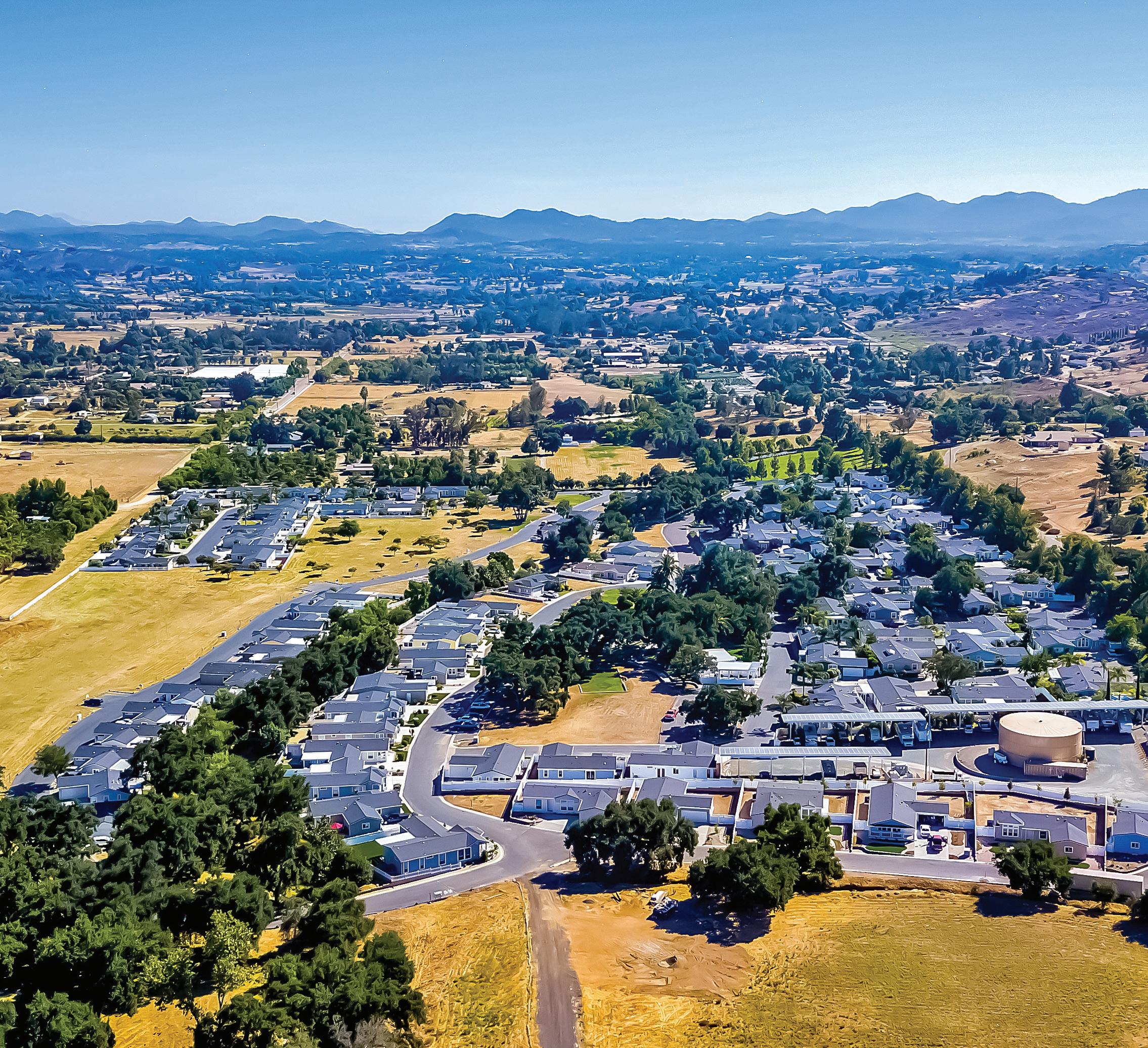
your business deserves the best
7 of the Top 10 Owners & Operators Partner with ManageAmerica to Streamline Their Day-to-Day & Make Sure They’re Not Leaving Money on the Table.
More than 20 years ago the RV/ MH Hall of Fame in Elkhart was drowning in debt, in need of new leadership, and was desperate for an update.
A longtime promoter of the RV industry stepped forward to take on the task, to raise the money, and turn the hall around. Darryl Searer, who retired from the role this year, took on the immense challenge for a salary of $1 per year.
There is a reason the hall named its annual Spirit Award after him.
“I am most proud of providing leadership at the Hall of Fame and seeing the MH and RV industries step up and support the vision of the future that we established in 2016,” Searer said.
Through his vision and leadership over the course of more than eight years the hall expanded operations, and during the 2019 induction dinner Searer announced that the organization had paid its debt and was operating in the black.
“I’ve never been more excited to give this address,” Searer told the more than 400 attendees.
In the years since, the hall has opened a new 21,000 square-foot Manufactured Housing Museum and added a 36,000 square-foot event space to the convention center.

Searer was at the helm to keep the place afloat and all projects on course during the pandemic when the industry and all else was unable to have large gatherings.
Facilities at the Hall of Fame now include:
• An RV Museum displaying a rare historical collection portraying RV’s role in family fun, exploring nature and sightseeing
• The Scoular Manufactured Housing Museum showcasing the industry’s involvement in providing the dream of home ownership to millions of people
• Hall of Fame inductee recognition areas, gift shop, and a theatre
• A library with archives of industry history and data
• More than 78,000 square feet of convention, meeting, and exhibit space
• A 21,000 square foot, yearround pavilion
• Beautiful grounds and a convenient location on a major interstate highway
Leo Poggione, a longtime Nevadabased retailer who volunteers his time with the hall as well as other leading industry organizations, said Searer in
his nearly 12 years of service has been instrumental in this growth.
“As many are aware, Darryl very generously donated these services,” Poggione said. “It is my belief that the RV and MH industries, as a whole, have no idea how much time and effort Darryl provided and the Hall of Fame would likely not exist today if it were not for Darryl.”
The RV/MH Hall of Fame in recent years has welcomed about 15,000 guests annually.
In addition to his service at the hall, Searer has served more than 20 years on the RVIA Public Relations Committee, as president of the RV Aftermarket Association, and as a vital member of the Go RVing Coalition.
Barry Cole, a member of the hall and its chairman emeritus, understood Searer’s passion for the institution. Searer, he said, had served the hall in the past, and returned “working night and day without pay.”
“Look at what happened,” Cole said. “Darryl resurrected the hall, with the assistance of the board, and created an incredible, beautiful museum with a huge convention facility. Darryl’s results are clear as he is a true hero to the RV and manufactured housing industries.” MHV









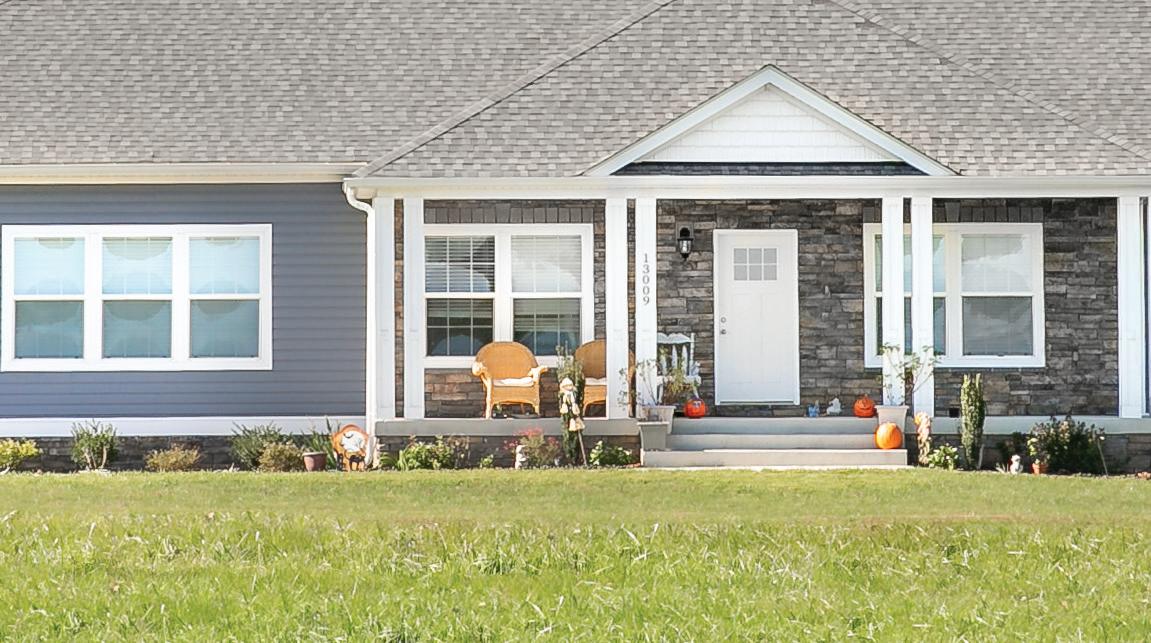



The manufactured housing industry’s premier event, the MHI Congress & Expo, returns to Orlando, Florida, from May 5 – 7, 2025, with more features than ever. This year’s program brings together industry leaders, innovators, and professionals for three days of education and exploration of the latest advancements in manufactured housing.
The event kicks off on Sunday, May 4, with the Oliver Technologies Golf Open and the Hart Kienle Pentecost/Lutz, Bobo & Telfair Clay Shoot. These events provide attendees with a chance to meet with other industry professionals in a relaxed setting while supporting the industry’s advocacy efforts.
A highlight this year is the expanded Developing with Manufactured Housing Seminar. Now a day-and-a-half event designed for builders and developers, this in-depth program features training on obtaining land-use approvals, financing options, and case studies on manufactured housing developments. The seminar is led by subject matter experts and includes a tour of the manufactured homes on-site in the MHI Neighborhood.
Monday, May 5, marks the beginning of the National Communities Council Spring Forum, an annual event tailored for home community owners and operators. With the 2025 theme, “The Road Ahead: Innovating and Sustaining the Future,” the forum will explore key industry topics, including AI’s impact on the sector, effective community engagement strategies, and emerging market opportunities.
In 2025, the expo hall is bigger and more dynamic than ever, spanning 60,000 square feet and featuring more than 170 exhibitor booths showcasing the latest products and services. The hall
includes interactive lounges, afternoon mixers, and the debut of the MHI Learning Lab — a dedicated theater on the show floor where exhibitors will present educational sessions.
Scheduled speakers include representatives from GAF Energy, ManageAmerica, and Rent Manager. Additionally, Manufactured Homes Sales Mastery will launch a new, interactive training platform for MHEI’s Professional Housing Consultant program.
Another returning highlight for the 2025 Congress & Expo is the MHI Neighborhood, displaying a range of the industry’s latest manufactured homes. The outdoor installation will be open from Monday, May 5, at 5 p.m. through Wednesday, May 7, at 10:45 a.m.
To further enhance the attendee experience, this year’s event features three distinct workshop tracks:
Newcomers Track – Ideal for those who are new to the manufactured housing industry, with fundamental content and the popular Guided Newcomer Roundtable.
Industry Hot Topics Track – Covering pressing industry issues, including zoning, rent control, and lending challenges.
Networking Roundtables Track – Offering small-group discussions with industry experts across a range of key topics.
With an expanded lineup of sessions, an interaction exhibit floor, and an agenda packed with opportunities to learn and grow, the 2025 MHI Congress & Expo is set to be the industry’s most comprehensive and engaging event yet.
Full details on speakers, exhibitors, Learning Lab sessions, and the event schedule can be found at congressandexpo.com. MHV









From left, moderator Chris Nicely, from ManufacturedHomes. com, Teresa Payne, from the U.S. Department of Housing and Urban Development, Paula Reeves, from Land Home Financial Services and an industry representative to the Federal Housing Finance Agency, and Lesli Gooch, from the Manufactured Housing Institute, participate in a panel during The Biloxi Manufactured Housing Show discussing finance opportunities for off-site built homes.
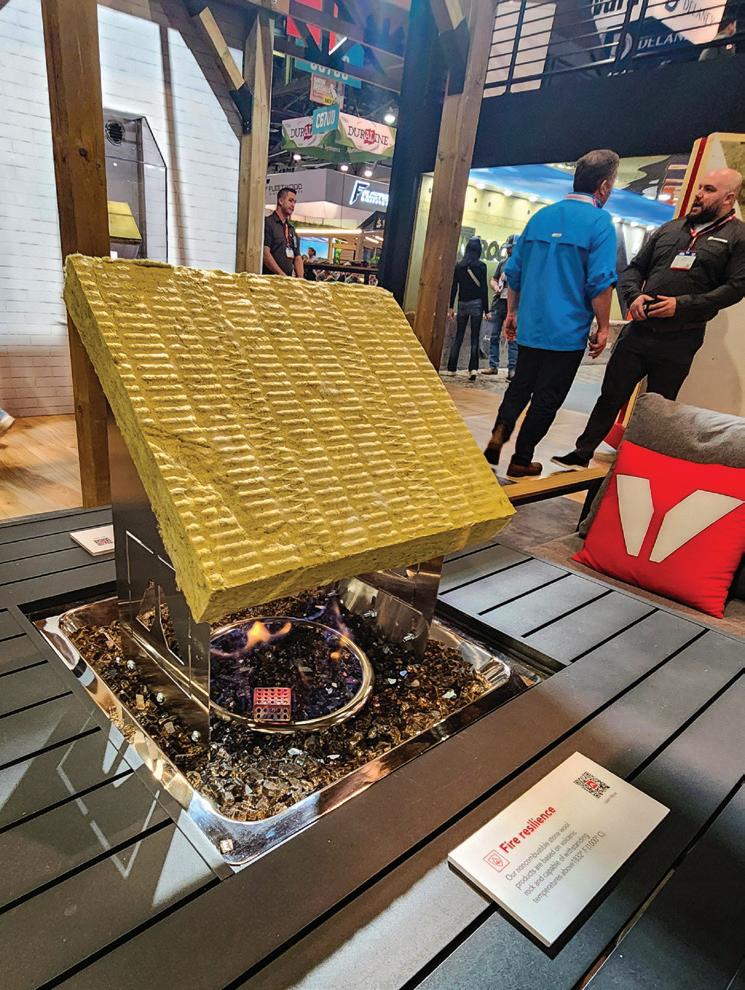
Rockwool, a company that provides fire and sound proofing insulation, set up a display during IBS 2025 at the Las Vegas Convention Center that included a small waterfall to show how the product sheds moisture and a small fireplace capped with the product to show Rockwool’s resistance to heat.
A representative from AirMada introduces its product to the media during the 2025 International Builders Show in Las Vegas this February. The company provides technology to help reduce the properties in a shower that lead to hard water buildup and mold, creating a healthier and easier-to-maintain bath space.

Champion’s Genesis product traveled well during the winter and spring of 2025, showing homes in Louisville and Las Vegas just weeks apart. The Michiganbased home builder has become a mainstay at the annual show, which draws more than 100,000 attendees each year, and will be held in Orlando in 2026.


Three industry companies — NPS, Metron, and Anequim — teamed up during the 2025 Louisville Manufactured Housing Show to host an evening boat ride and bourbon tasting (and history lesson with trivia!). About 60 manufactured housing professionals who are partners and customers of the three companies enjoyed cocktails, dinner, and insights on bourbon during a tour on the Ohio.
Suzanne Felber, “The Lifestylist” and a regular contributor to MHInsider, catches up with industry colleagues during a sneak preview open house at The New American Home, a feature of the annual builder’s show in the foothills of Henderson, Nevada.



































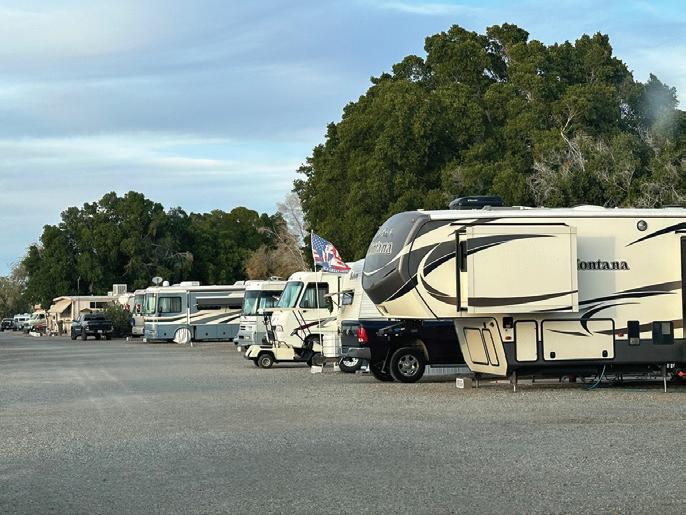



When you need an appraisal on a new or pre-owned manufactured home, go with the time-tested experts on market-based comparable valuations since 1987.
At Datacomp, manufactured homes are our singular focus — and you won’t find more expertise, specialization, or reliability anywhere else.


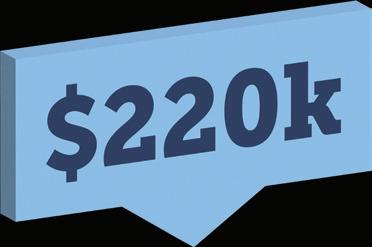
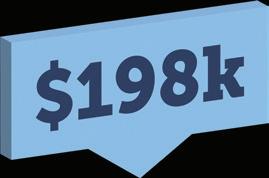

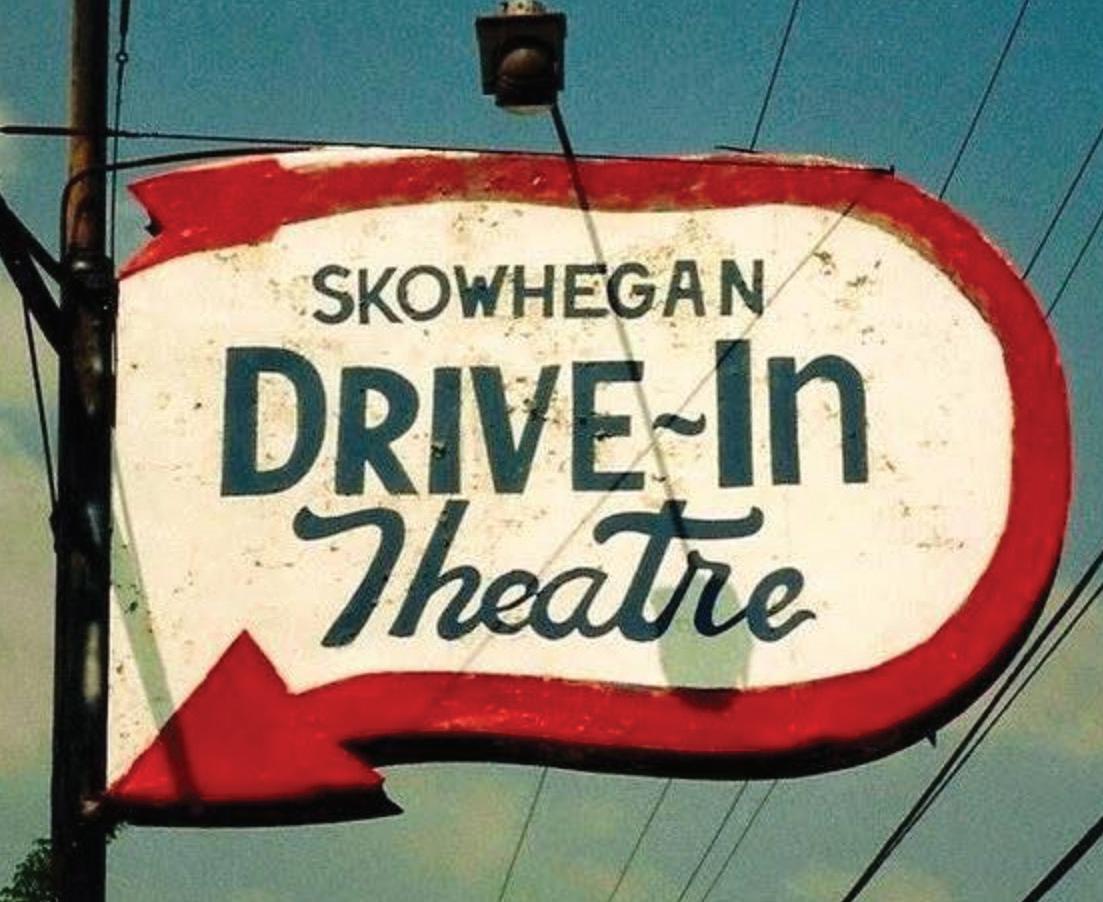
Aformer drive-in movie theater in Maine is being converted into a manufactured home community that will accommodate 30 to 40 new homesites.
The Skowhegan Drive-In Theater, which had been in operation since 1954, closed in 2023. Municipal records show the property was purchased and is being redeveloped by A+C Properties, owned by Aaron Crocker. Dirigo Engineering and Randy Butler, of Fairfield, Maine, are listed as an authorized agent on the property.
Crocker said he is working through ideas on how to maintain some of the drive-in’s identity and the former use of the property with the new development he has in mind.
“People in the area are definitely nostalgic about the property,” Crocker said. “I remember going with my family when I was a kid, and I loved it.
“I saw the original Jurassic Park in 1993,” he said.
A+C Properties also owns and manages a nearby apartment building, and have been working with manufactured homes in small villages on scattered sites.
“We have 18 units right now, including three new homes from Commodore that we were using as kind of an experiment while we decided if we going to buy this land,” Crocker said. “We’ve had a really good experience with them, and our tenants are very pleased.”
By Dawn Highhouse
Crocker said he will bring a model home near the entry of the new community, and allow residents to design and purchase their own home. The property will be operated on a land-lease model.
“There is a large paper mill nearby, a local hospital is expanding, and New Balance shoes is expanding here, too, so there are a lot of new jobs and not a lot of
Protection. The new owner also is required to obtain a community license and a campground license from the state.

affordable housing,” Crocker said. “We want to provide something that is nice, well kept, with new, affordable homes.”
The new community was considered and recommended for approval at the Feb. 4 meeting of the Skowhegan Planning Board. The property was purchased in May 2024 through Allied Realty, and will be subdivided for the project.
In addition to the approximately 36 new homes, the 11.23-acre property will provide six RV sites. The community will be connected to city utilities, and will require a stormwater permit from the state Department of Environmental
Near the main entrance of the property, the movie screen will be pulled down and a new pond and stormwater drainage system is proposed. The entrance to the old theater and new community on Waterville Road is flanked by Skowhegan Tire Center and an American Legion post.
Crocker also will put in a new road, a roadside stormwater buffer, and a water meter building. The property will use existing hydrants for fire protection. MHV
Dawn Highhouse has been in the manufactured housing industry for 25 years and is the vice president of customer experience at MHVillage.com. In her role, Dawn manages and implements strategic customer service, product development, and marketing initiatives.


By Suzanne Felber
At the recent Design and Construction Week in Las Vegas, it was obvious that outdoor living is becoming an important focus for new home buyers. Knowing that a home has room to entertain and enjoy the great outdoors, as well as under-roof enclosed living spaces, is becoming a big consideration when looking for a new home.

This year, Design and Construction Week had over 124,000 attendees, 2,500 exhibitors, and over 1.2 million square feet of exhibits. That ended up being a lot of walking, but it was also a wonderful opportunity to view and learn about what trends we will be seeing in 2025 and beyond.
The lines are blurring between outdoor and indoor living spaces. Both Champion and Cavco had two homes at the show, and they both received much attention. Cavco brought two 400-square-foot park models, including one with a rooftop observation deck that was always busy. A covered porch on the front of the home made it feel much more significant than its square footage. The Champion home had a front porch that lent itself to entertaining. Both homes featured a lot of glass with large doors that open to the outside areas. »
One of the new trends in outdoor living that we noticed was innovations in grills and outdoor fireplaces. Smeg has a new line of electric grills, making it possible to use them almost anywhere. There are now many options for outdoor
These create a great space to gather with friends or family. It’s also the perfect place to watch the sun come up with warm cup of coffee.
Pizza ovens are also becoming a favorite outdoor cooking spot. They range in

fireplaces that use electricity and are also a heat source for those colder days.
Communities also realize that outdoor living areas add lifestyle and value to a property like never before. It is also easier to live in a smaller space when there are community areas to enjoy
The Reserve at Flores Valley is a new neighborhood community near San Antonio that encourages active, involved residents. Cavco’s In-Neighborhood division, Clayton Homes, and Champion Homes all have new homes for sale in the community. The Reserve at Flores Valley features an enclosed soccer field, dog park, beautiful pool, and picnic pavilion complete with grills, which residents can enjoy all year long.
Fire pits are also a great addition to any outdoor space. They can be fueled with propane or firewood and use stones, lava rocks, ceramic logs, or even glass.
price from $100 to thousands of dollars and are about more than just cooking pizzas. The clay and brick forms of these have been used for over 4,000 years and are ideal ways to roast vegetables, bake focaccia bread, create a cheesecake, or even make Bananas Foster!
The Louisville Manufactured Housing Show also featured innovative ideas for including outdoor living spaces in our homes. With consumers’ renewed interest in investing more in outdoor living spaces, Franklin Homes had a model with a covered porch area complete with a built-in bar, sink, and refrigerator. There is also an additional seating area with a stone fireplace and TV above — the perfect fall place to watch those college football games.
The Cavco Millenian model at Louisville also was built for outdoor entertaining. Its kitchen has a hydrau-
lic lift window that opens to the outdoor entertaining space, which also has a large television and fireplace. The window makes it ideal for passing beverages or appetizers.
Outdoor kitchens are becoming more popular, with built-in appliances like beverage drawers and ice makers. All-weather cabinetry is now available in hundreds of colors and styles, making it easy to customize your space to your lifestyle.
As these options become more popular, the pricing seems to be improving, too, and favorites like pizza ovens are now
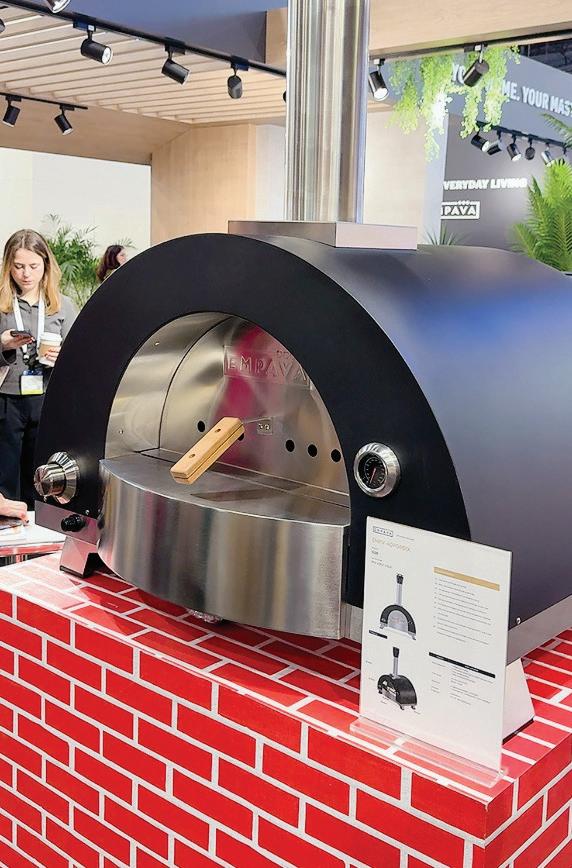
within reach of everyone. I can’t wait to see what our manufacturers have in store for us in 2025! MHV
Lifestylist Suzanne Felber has been active in the housing industry for more than 30 years. Felber realized that factory-built housing was the housing of the future, and has been actively working to promote the lifestyle ever since. To learn more about her work, visit www.lifestylist.com and www.americanhousingadvocates.com, or read her @lifestylist social media posts.


The VA Group is representative of a small subset of potential service sector contractors available to help home sales organizations and many other critical business groups to be more productive and profitable.
Based in Las Vegas, but with a workforce from abroad, the VA Group provides virtual assistants that use AI, among many other tools, to speed up everyday workflow.
“Most of our team members are in the Philippines and South Africa, but we also have virtual assistants from Venezuela, Argentina, and many other countries,” Erika Carla, a member of the VA Group team said. “They are vetted and undergo screenings, including English proficiency tests, criminal background checks, and skill set matching.”
The benefit of a qualified VA, Carla said, is the flexibility. A VA can work during the client’s work hours for better communication, and during flex hours as needed.
Virtual assistants from the VA Group can do administrative work, including calendaring, scheduling, followups, incoming and outgoing phone calls, emails, and prioritization of tasks including internal communication, research, records maintenance, and database management.
But that’s just the starting point.
In client prospecting, a VA from the group will make as many as 300 cold calls per day, and 5,000 emails per week. The group can provide CRM database management or a dedicated campaign manager.
They also do brand strategy, design, and accounting.
Anequim has been operating in the manufactured housing industry for nearly two years now, and provides customizable workforce solutions for organizations that need a strategic partner.
“Anequim delivers fully customizable workforce solutions tailored to each client’s needs while prioritizing compliance, efficiency, and long-term growth,” Anequim CEO Gwen Aspen said.
Through an integration with Rent Manager, Anequim offers a 24/7 call center, and a back-office support team without having to commit to a full-time employee.
The company, based in Omaha, Nebraska and with a workforce largely in Mexico, provides a vetting process that puts the client in control. The workforce provides human resources, payroll, and compliance services, as well as account management with a growth mindset.
Anequim Chief Marketing Officer Nicole Zeno said their workforce is made available long-term successfully with no significant initial investments.
“Anequm’s success is tied to the ongoing success of our clients, making the partnership truly sustainable,” she said.
Rocket Station provides virtual assistants with a focus on housing, including in areas of property management.
Ira Gayatin, business development lead with Rocket Station, said the relationship with a client starts with interviews and several weeks of onboarding to help align the team and its tools toward the desired outcomes.
“This is where custom solutions would kick in,” Gayatin said. “Our VAs get soft skills and housing training for computer and phone work, sales, customer
service, transaction coordination, and social media management.”
“As long as we can document the whole process, the VA can do it,” he said.
A client offers search qualifications — such as capability with a particular technology, years of professional experience, or by a personality trait indicator. From their immediate roster of 500 candidates, or the wider field of 1,800, Rocket Station provides three or four potential VAs for the client to meet and interview.
The business is based in Dallas and much of its workforce is in the Philippines.
Gallagher and Mohan specializes in outsourcing for the real estate investment industry, with experience in the major asset classes.
“We have offices in Washington D.C., Atlanta, and New Delhi, India,” Gallagher and Mohan representative Marko Simic said. “We have 250-plus employees and work with more than 120 real estate clients across the United States and Europe.
“There are many ways we can work together,” Simic said. “Our clients use our service to scale and streamline their underwriting, asset management, investor reporting, market research, lease administrators and accounting processes.”
The remote staff works through Teams, for instance, and can engage with a client and their customers in support of efforts within property management software and solutions including Yardi, AppFolio, MRI, Sage, Procure, Entrata, and others. MHV






55% of New Homes are Placed in Communities COMMUNITY LIVING
44K+ Communities
44K+ Communities
4.3 Million
4.3 Million
Estimated Home Sites
Estimated Home Sites
55% of New Homes are Placed in Communities

MHVillage and Datacomp combined efforts with industry partners MHI and Statistical Surveys to provide manufactured housing professionals updated annual trends and statistics from across the marketplace.
20.6SEGMENTMillion
People
9.3% of New Single-Family Home
People Live in Manufactured Homes 9.3% of New Single-Family Home
Starts are Manufactured Homes
Starts are Manufactured Homes
76% of New Manufactured Homes are Titled as Personal Property (Chattel)
76% of New Manufactured Homes are Titled as Personal Property (Chattel)
120,000 100,000 80,000 60,000 40,000 20,000 0









Steadfast LA, a nonprofit accelerating the rebuilding of Los Angeles after the recent fires, is partnering with Samara, a California-based modular builder, to donate new homes for people who lost their home or were displaced.
The nonprofit, started by successful real estate developer Rick Caruso, is designed to allow homeowners who lost everything to remain in their communities at no cost.
“These homes will be directed to low-income homeowners in Altadena and the Pacific Palisades who lost homes,” the organizations stated in a shared news release. “The homes will be 100 percent funded through Steadfast LA Foundation, a newly established charitable organization that’s affiliated with Steadfast LA and designed to accept donations to support initiatives like this.”
There will be future collaborations with independent organizations to “administer and facilitate the eligibility, building, and installation process” between fire survivors and Samara. »
Samara and Airbnb co-founder Joe Gebbia will donate $15 million to the initiative, including an initial $5 million, as well as a pledge to match an additional $10 million in major donations. The Caruso Family Foundation has provided seed funding for the program. Funding will go to constructing and installing factory- built homes for people who would otherwise be forced to relocate despite wanting to stay on their property.
Samara will build these homes for no profit and there will be no costs for fire survivors.
“This initiative is about keeping communities intact,” Caruso said. “Many of the people struggling the most right now are those who have lived in these neighborhoods for decades. They built their homes many years ago, they’re underinsured or lack insurance, and now they have lost everything. We’re giving these victims a realistic way to stay on their properties and quickly return to

their lives at a time when the deck is stacked against them.”
Samara’s homes are built in a factory in about six months and can be installed on a property in as little as a few weeks, with minimal on-site work.
Off-site built homes will be critical to rebuilding Los Angeles, as local construction costs rise, delays mount, and
“Labor and material prices are going to increase, and people will face longer rebuild timelines. We build these homes in a factory, which will avoid the strain facing the L.A. market and help people get homes on their properties faster. We’re proud we can help.”
Samsara Co-founder and CEO Mike McNamara

resources face supply-chain strain given the scale of the disaster.
“Our hearts go out to all the individuals, families, and communities impacted by these destructive wildfires,” Gebbia said. “So many people are faced with unbelievable circumstances. We want to help them get back home.”
Samara stated it will handle the entire installation and permitting process for affected homeowners, and Steadfast LA intends to work closely with city and state officials to expedite permitting and regulatory processes to ensure victims can have these units installed without unnecessary delays.
Steadfast LA invites other modular home companies to join the program and build homes for fire victims, the company stated. According to multiple reports and studies, a significant number of the impacted residents will not

be able to cover the cost of rebuilding through insurance alone.
“The construction environment in Los Angeles is going to be tough,” said Samara co-founder and CEO Mike McNamara. “Labor and material prices are going to increase, and people will face
longer rebuild timelines. We build these homes in a factory, which will avoid the strain facing the L.A. market and help people get homes on their properties faster. We’re proud we can help.” MHV


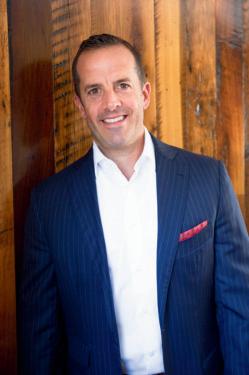




By Sean Vichinsky
What started as a one-man operation behind the family hardware store in Phoenix, Arizona now stands as an industry-leading manufactured housing company with a mission to help solve the housing crisis.
In 1965, Al Ghelfi founded Roadrunner Manufacturing, also known as Cavalier Manufacturing, and began

building recreational truck campers in his father’s hardware store lumber yard. Working with a local salesman,
Ghelfi soon had a steady stream of satisfied customers buying his campers. And that’s where it all began. Cavalier Manufacturing, now Cavco Industries, was the beginning of what has become a great American success story.
Cavalier, which solely produced truck campers at the time, grew steadily during the 1960s. But the gasoline scarcity and subsequent price hikes in the 1970s prompted Ghelfi to reimagine his business plan. Americans had suddenly stopped buying truck campers when recreational car travel became more expensive, and Ghelfi knew he needed to pivot. When product demand slowed, Ghelfi’s business partner suggested they declare bankruptcy. But Ghelfi had other plans. He bought out his business partner and opted to move forward with building mobile homes — no gasoline required.
“We will be the best one-per-day mobile home builder in the world,”
Ghelfi was quoted as saying. “That’s all we’ll build.”
When Cavalier Manufacturing shifted from building recreational truck campers to building housing, Ghelfi rebranded Cavalier Company as Cavco Industries.
Cavco continued to flourish and broaden its market by producing manufactured homes. Ghelfi’s business was booming, and Cavco’s revenue quadrupled in the late 1970s.
designed to build luxury park model homes, cabins, and cottages. This new production center, called Cavco Park Model RVs & Cabins, builds luxury park models and cabins that are used for resort rentals and seasonal dwellings.
As a result of their deep commitment to finding savings in the manufacturing process and passing those savings along

Cavco has a long history of developing innovative products and close customer relationships, so it is no surprise that Cavco led the industry in the development and production of park model homes beginning in 1988.
During this era of innovation, Cavco built for the outdoor hospitality industry, supplying vacation rentals, “glamping” cabins, cottages and other specialty projects to campgrounds, RV parks and other recreational hospitality businesses.
To date, Cavco has sold thousands of park models, cabins, and cottages and was largely responsible for the park model boom that first swept Arizona in the 1990s.
To better meet the recreational hospitality industry’s demand, in 2021 Cavco launched a new 118,000 square-foot-facility in Glendale, Arizona, specifically
to their homebuyers, Cavco has begun using solar power. In 2023, Cavco partnered with a solar contractor, installing a solar array at the new Glendale park model facility to provide solar capacity to generate sustainable power. The rooftop modules and parking canopies produce approximately 60 percent of the electrical power for this temperature-controlled indoor facility.
“For our first solar project, we were looking for a way to minimize our electric costs in our first air-conditioned manufacturing facility,” Cavco Senior Vice President of Corporate Development Steve Like said. “Solar energy is a cost-saving investment in every climate and helps us achieve our mission to build homes in a way that keeps costs low.”
From September 2023 to March 2025, this first project eliminated 1,400 tons of CO2 emissions, which is the equivalent of planting 27,500 trees or eliminating more than 8.5 million miles in driving a gasoline-powered car. Plans are in the works to solarize three more Cavco plants.
In 1996, Centex Corporation ventured into the world of manufactured and modular home building, choosing to acquire for $75 million an 80 percent ownership stake in Cavco. Seven years later, Centex exited the manufactured housing industry, and Cavco was once again an independent company, now listed on the NASDAQ.
Over the past two decades, Cavco has continued to grow to meet customer demands by hand-selecting and acquiring manufactured and modular homebuilders across the country. These acquisitions include:
• Fleetwood Homes — 2009
• Palm Harbor Homes —2011
• Chariot Eagle RV Park Models — 2015
• Fairmont Homes — 2015
• Friendship Homes — 2015
• Destiny Homes — 2019
• Solitaire Homes — 2023
• Commodore Homes (with brands Pennwest, Manorwood, R-Anell, and Midcountry) — 2021
After serving on the board of directors since 2008 and as chairman of the board in 2018 and 2019, Bill Boor became president, CEO and director of Cavco Industries in 2019. As a result of his passion for affordable housing and »

for the Cavco employees, his leadership systemically changed the company and impacted the industry.
As chairman of the Manufactured Housing Institute, Boor lobbies at the state and federal level for zoning changes and other affordable housing initiatives. He also testified at the House Subcommittee on Housing and Insurance, representing the industry in energy efficiency and environmental, social and governance (ESG) deliberations. Boor is committed to providing affordable, high-quality and energy-efficient homes for customers and to creating a safe, rewarding workplace for employees.
“I stepped into the CEO role of a very successful company,” Boor said. “Rather than continuing on the established path, we quickly redefined our operating philosophy, integrated our
operating businesses and made an explicit strategic commitment to the development and success of our people. We’re a tighter and more aligned company with a shared vision of making an impact in affordable housing.”
It didn’t take long to see that Boor cared about more than simply growing the company’s bottom line. As an outgrowth of One Cavco — the cultural core values he introduced — this ongoing investment in Cavco’s employees led to extensive safety improvements, product innovations, and developmental programs.
Cavco initiated its Safety Now program in 2020. As a result, over the last four years, the company’s Total Recordable Injury Rate, or TRIR, has steadily improved. In 2024, 90 percent of Cavco’s manufacturing locations
achieved a TRIR below the manufactured housing industry average of 7.7.
In an effort to tackle the affordable housing crisis close to home, Homes for Our Own was launched in 2022. Primarily funded through employee contributions and matching company funds, this initiative supports employees who would like to purchase their first home. The effort provides financial education that serves them for a lifetime, as well as contributing matching funds for homeownership.
Cavco also implemented Master of Craft, a structured career development plan for frontline staff that received an APEX Award by Training magazine. The award is presented to the top corporations worldwide that have set the benchmark for employee training and development. »

In 2023, Cavco launched its Anthem series, the first nationally available, multi-family HUD-approved duplex homes. This product innovation marked a significant step in Cavco’s commitment to help end the affordable housing crisis. The Anthem duplex provides an affordable answer to what federal and local governments have been asking for by doubling the housing density on the same available land.
With 31 production facilities at the close of 2024, the combined Cavco brand represents more than 560 years of manufactured and modular homebuilding industry experience. Additionally, the company includes 79 retail locations and employs approximately 6,200.




















As the company celebrated its diamond anniversary, Cavco is introducing a new tagline — “Where Exceptional Meets Affordable.”
“In four words, the tagline resonates with customers and supports our One Cavco commitment to provide the industry’s most exceptional homes at affordable prices,” Cavco Senior Vice President of Marketing and Communications Colleen Rogers said. “Our brand represents this commitment to build homes with unmatched value — and with the exquisite finishes and family-friendly designs our customers want.
“This commitment continues to be the foundation of our success and drives us forward,” she said.
In March 2025, Cavco aligned its extensive manufacturing brand lineup under the Cavco name, strengthening




















its national brand identity and recognition. This repositioning leverages the resources, experience, and vision of the Cavco brand with the unique, local expertise and reputation of the regional manufacturing facilities.
Additionally, the company is streamlining its product segmentation to maximize digital marketing effectiveness and simplify the homebuying process. Moving forward, homes will be identified by defined product lines rather than legacy brand names. This shift ensures prospective homebuyers, dealers, communities, and developers can more easily find the right Cavco-built affordable home that meets their needs.
“With Cavco’s growth and our focus on the customer experience, the time is right to rethink how we can improve the customer’s ability to quickly focus their home search,” Boor said. “This realignment to a single brand that focuses on product characteristics will transform how we go to market across our national manufacturing operation, leveraging our investment in digital marketing, and opening new national marketing opportunities. It’s a big win for Cavco, our retail partners, and most importantly, our homebuyers.” MHV
Sean Vichinsky is an editor of MHInsider and a marketing copywriter for MHVillage.

Reclaim some of your all-too-scarce time—use automated tools to eliminate unnecessary effort and repetition.
From posting recurring charges and late fees to sending reminders and statements, Rent Manager’s comprehensive automation features will expedite your accounting processes and give you back hours—effortlessly.




By Alexandra Stone

The SECO Veteran’s Assistance initiative provides financial assistance to veterans and first responders living in manufactured home communities.
SECO is a nonprofit 501(c)3 that serves the needs of small and mid-size community owners through its annual conference. More than 500 community owners and other industry professionals attended the 2024 conference in Atlanta.
The organization donates a portion of its proceeds to veterans and first responders who live in manufactured housing communities and are in need of assistance. For 2024, SECO donated $5,000 to Comfort Farms and $5,000 to Warrior Outreach.
SECO’s hope is that owners who attend the conference will submit requests to provide assistance to the veteran and first responders residing in their communities.
For more information about the Veterans Assistance Fund, send an email to contact@secoconference.com.
SECO will return to the Renaissance Waverly Hotel on Sept. 8-10, 2025 with about 600 small and mid-size community owners and other manufactured housing professionals who can find educational opportunities, entertainment, industry exhibitors, sponsors, and display homes.

MH2X is a SECO-sponsored initiative to increase manufactured housing production by encouraging community owners to buy, sell, and finance new manufactured homes to upgrade communities and fill vacant lots. Hundreds have already attended the one-day workshops.
Show Search is a new app industry professionals can use to locate manufactured housing production facilities and to contact personnel close to a specific community, retail sales location, or development site.
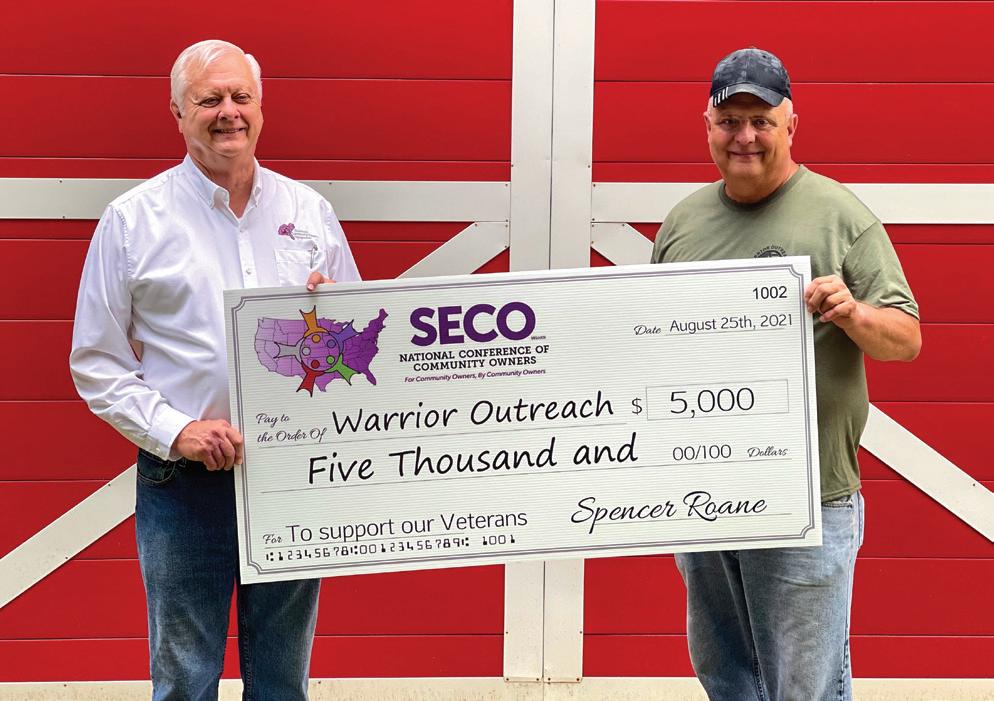
For more information on the September event visit secoconference.com or contact Alexandra Stone at alexandra@secoconference.com. MHV
Alexandra Stone specializes in social media mar keting and sales. She has a keen eye for digital trends and a passion for connecting with audiences. Stone helps enhance the online presence of industry profes sionals and works as administrative assistant for SECO.



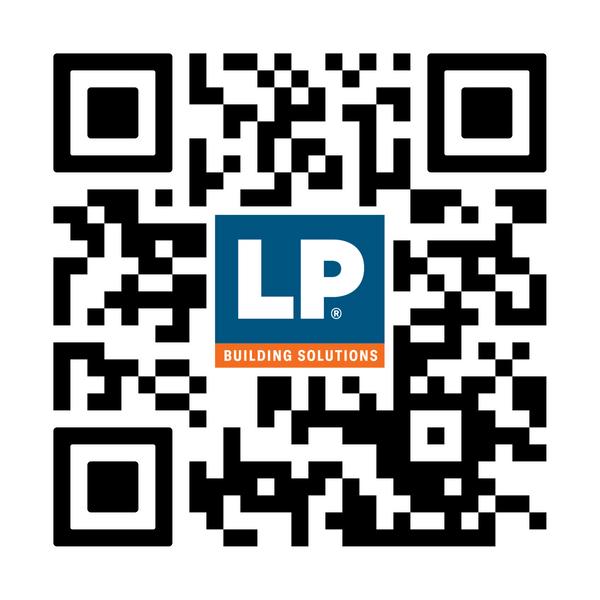

From one-time close loans to specialized financing for unique property types— including manufactured, modular, and alternative housing—we support your vision at every stage.
A proprietary mortgage platform, Octane®, streamlines the mortgage process with automation to maximize partnership efficiency.
Backed by strong executive relationships with Fannie Mae and Freddie Mac, our leadership drives market evolution, positioning our partners at the forefront of opportunity.





Homeownership isn’t one-size-fits-all. That’s why we offer a diverse range of lending options designed to meet unique financial needs, making homeownership more attainable.
From one-time close construction loans utilizing FHA, VA, or Fannie Mae programs to flexible credit terms and low down payment options, we provide borrowers with financing solutions that fit their path to homeownership.
Powered by Octane ®, a proprietary mortgage platform, we automate 90% of the process— streamlining approvals, reducing paperwork, and helping borrowers close faster with less hassle.
With deep experience in off-site construction financing, we provide lending solutions for a wide range of property types, including manufactured and modular homes, barndominiums, tiny homes, and community developments featuring these home types.
Contact us to learn more about how Cardinal Financial can elevate your construction lending experience.

By Ryan Kilpatrick
By transforming how we approach housing production, communities can create immediate, meaningful progress in addressing critical housing shortages
The housing crisis isn’t just a statistic — it’s a deeply human challenge that touches every corner of our nation and requires solutions now. Most markets are dramatically under-producing housing, falling short by a staggering three to five times the number of homes needed to support the growing number of households in a region.
Talk to local builders or lenders, and you’ll hear a familiar refrain of seemingly insurmountable obstacles. Skilled trades are stretched thin. Financing options are limited. Developable land that is properly zoned is scarce. The entire ecosystem appears to be operating at maximum capacity, leaving little room for growth.
Creating a healthy housing ecosystem isn’t about waiting for perfect solutions — it means creating immediate, mean-

ingful progress with an attitude of continuous improvement over time. And let’s be clear, no one can afford to wait years for systemic change. Right now, local businesses are trying to hire. School districts are seeking educators. Young professionals are launching their careers. Seniors are struggling to maintain their independence.
To those who are close to the industry, it seems like the perfect moment in time to transition to more off-site construction where labor supply and environmental factors are less volatile, yet many local communities are nervous about adjusting permitting frameworks to accommodate off-site housing production.
The key is to start small, but think strategically.
Cities and towns rarely mobilize around abstract concepts, but they can rally around concrete, visible progress. If you’re in
an area that is just beginning to consider the potential for offsite construction, try a small number of simple but potentially inspiring starting points:
• Build a pocket neighborhood for year-round residents on a previously overlooked parcel. A small neighborhood of six to 12 quaint cottage homes clustered around a common green space with smart landscaping and parking tucked in the rear. It could be a quick win for a locale that is housing challenged. It also can become a great prototype for the local permitting office to get accustomed to the housing type and installation process.
• Rehabilitate an underutilized mobile home park with new manufactured homes, improved infrastructure, and community amenities. While getting a vacant parcel of land zoned to allow for new manufactured housing can be difficult in many places, there are hundreds of older communities that could use attention. These can be excellent opportunities for site cleanup, better landscaping, and new homes to reset the local community’s understanding and acceptance of this type of housing.
• Partner with a handful of homeowners in a specific neighborhood to provide backyard cottages or accessory dwelling units. Work out the financing with three to five homeowners in a local neighborhood to ensure they will achieve a positive return on investment from rental income or savings that stem from caring for an aging loved one at home rather than paying for assisted living. Then quickly install all five backyard cottages over the course of a few weeks and host a neighborhood block party and open house so that the whole community can walk through these new units and hear from the homeowners about why they made the choice to add a modular unit, for instance, to their property.
These aren’t just housing projects — they’re transformation initiatives for local governments and the communities they serve. Use them as opportunities to communicate broader housing needs and to show how off-site production can help to support meaningful and positive changes in their own communities. Start small, then scale. And talk about it incessantly.
Each housing initiative is a chance to do two critical things simultaneously: »


1. Create Housing: Address immediate needs for housing at a variety of price points.
2. Build Community Understanding: Illuminate the broader context of housing needs and common barriers to housing where broader solutions are needed. In your communication materials, you’ll want to ask and answer the crucial questions:
• Who will be served by this housing?
• Why are these residents important to our community?
• How many others share similar housing challenges?
• What would it take to scale this solution? What are the barriers in the way of doing more of these projects?
• Who can help in the community and how can they get engaged?
You’ll inevitably still encounter obstacles — overly restrictive parking requirements, the building department isn’t communicating well with the planning department, utility connection fees aren’t what you were told they would be, or a couple of neighbors simply don’t want to see any changes on that vacant lot. But here’s the revolutionary approach: view each barrier as a communication opportunity.
Use these barriers to educate the local residents and stakeholders about how this difficult process is indicative of the broader regional housing shortage. Build a broader understanding of how each piece of the process, no matter how seemingly small, is impacting the area’s ability to grow. And create alliances for systemic change. Don’t ever miss an opportunity to align your goals and objectives with those of another influential organization or person.
These initiatives will feel endlessly frustrating. But if you toil for months (or years) on one project and view all the problems as things you never want to face again, what was the point of the exercise? Instead, view all of those obstacles as the things to lean into the hardest.
The obstacle is the way.
Housing isn’t just about buildings. It’s about people. It’s about creating spaces where individuals and families can thrive, where communities can grow, and where potential can be realized.
Transformation doesn’t happen by accident. It requires deliberate, strategic action — a commitment that goes far beyond
a single project or isolated effort. Each housing initiative is a potential blueprint, a learning opportunity that could inspire hundreds or even thousands of similar developments. But this potential can only be unlocked through intentional, transparent communication, and rigorous problem-solving.
Every project will face challenges, and some will be systemic — deeply rooted in outdated regulations or complex economic constraints. Others will be more immediate and practical: poor planning, project management hurdles, neighborhood dynamics, or resource misalignments. The true measure of a small government’s resilience isn’t the absence of these challenges, but its collective ability to:
• Recognize obstacles transparently
• Document and share lessons learned
• Develop adaptive strategies
• Build a network of support and knowledge exchange
The most powerful resource in addressing housing challenges isn’t money or policy — it’s collective will.
By starting small, staying persistent, and maintaining a compassionate, strategic approach, we can transform our housing ecosystems — one initiative, and one conversation at a time. But this transformation demands more than good intentions. It requires unwavering commitment, political will, and a shared vision of community well-being.
Our housing future isn’t predetermined. It’s carefully, intentionally crafted — by us, for us, with every challenge we face and every solution we implement. MHV
Ryan Kilpatrick, owner of Flywheel Companies, has a background in economic development, housing finance, community design, and development finance.

He is the former executive director of Housing Next, where he helped to define access to housing as a core economic development issue for West Michigan through data-oriented dialogue and partnership with employers, local municipalities, chambers of commerce, and developers. He is certified professional with the American Planning Association and the National Development Council’s Economic Development Finance Professional, and is co-author of the Michigan Statewide Zoning Reform Toolkit.



















































More than 22 million Americans live in manufactured homes, and with over 100,000 new homes built in 2024, the industry is growing. The 2024 HUD update gives builders more flexibility to integrate modern, a ordable, energy-e cient propane appliances that enhance performance and comfort.
By eliminating alternative construction letters, the update simplifies factory installation of high-performance propane solutions. From tankless water heaters with endless hot water to condensing gas furnaces for greater e ciency, propane appliances deliver the comfort and savings homebuyers demand.
Build and sell better homes with propane — delivering the comfort and e ciency buyers want. Learn more at propane.com/manufacturedhousing.





Since 2004, manufactured housing professionals have placed their confidence in MHVillage to generate high-performing leads that consistently deliver the highest returns for their marketing budget.


By Rachel Siegel and Linlin Liang
Full report published March 26, by Pew Charitable Trust at pew.org
A persistent national housing shortage of four million to seven million homes has driven housing costs to record highs, putting homeownership out of reach for millions of Americans. On Feb. 25, The Pew Charitable Trusts convened experts, lenders, and advocates to explore how federal and state policymakers could modernize financing for manufactured homes to increase the housing supply and expand homeownership opportunities.
Manufactured housing has the potential to address two major challenges in the U.S. housing market: limited supply and affordability. Millions of Americans currently live in manufactured homes, which can cost two-thirds less than other single-family homes.
Yet, as the event highlighted, borrowers face challenges when seeking access to traditional financing for manufactured homes. Because these homes have long been treated differently — both financially and legally — than site-built houses, access to mortgages for manufactured homes is stymied, which limits the availability of these homes.

For manufactured home buyers, in particular, accessing credit to buy their homes can be difficult. While there are a few ways that families can finance their manufactured home purchases, mortgages are the safest and most affordable loan type. But new research from Pew shows that only 44 percent of manufactured home borrowers have a mortgage, compared with 95 percent of site-built home borrowers. Another 35 percent of manufactured home borrowers have “home-only loans”, or chattel loans.
Home-only loans are typically less affordable than a mortgage because of shorter repayment terms and high interest rates. But they’re often the next best option for homebuyers who can’t obtain a mortgage, because they have some federal- and state-level protections, and the buyer becomes the home’s legal owner at the beginning of the loan.
In the absence of better loans, manufactured home borrowers are four times more likely than other home borrowers to use risky contract financing, such as lease-purchase or contract for deed. These arrangements are typically made directly between a seller and a buyer.
“We’ve heard a very strong commitment and a sense of optimism about manufactured housing and the … role that [manufactured homes] play in the affordable housing solution.”
— Nick Bourke, Policy Adviser at FinRegLab
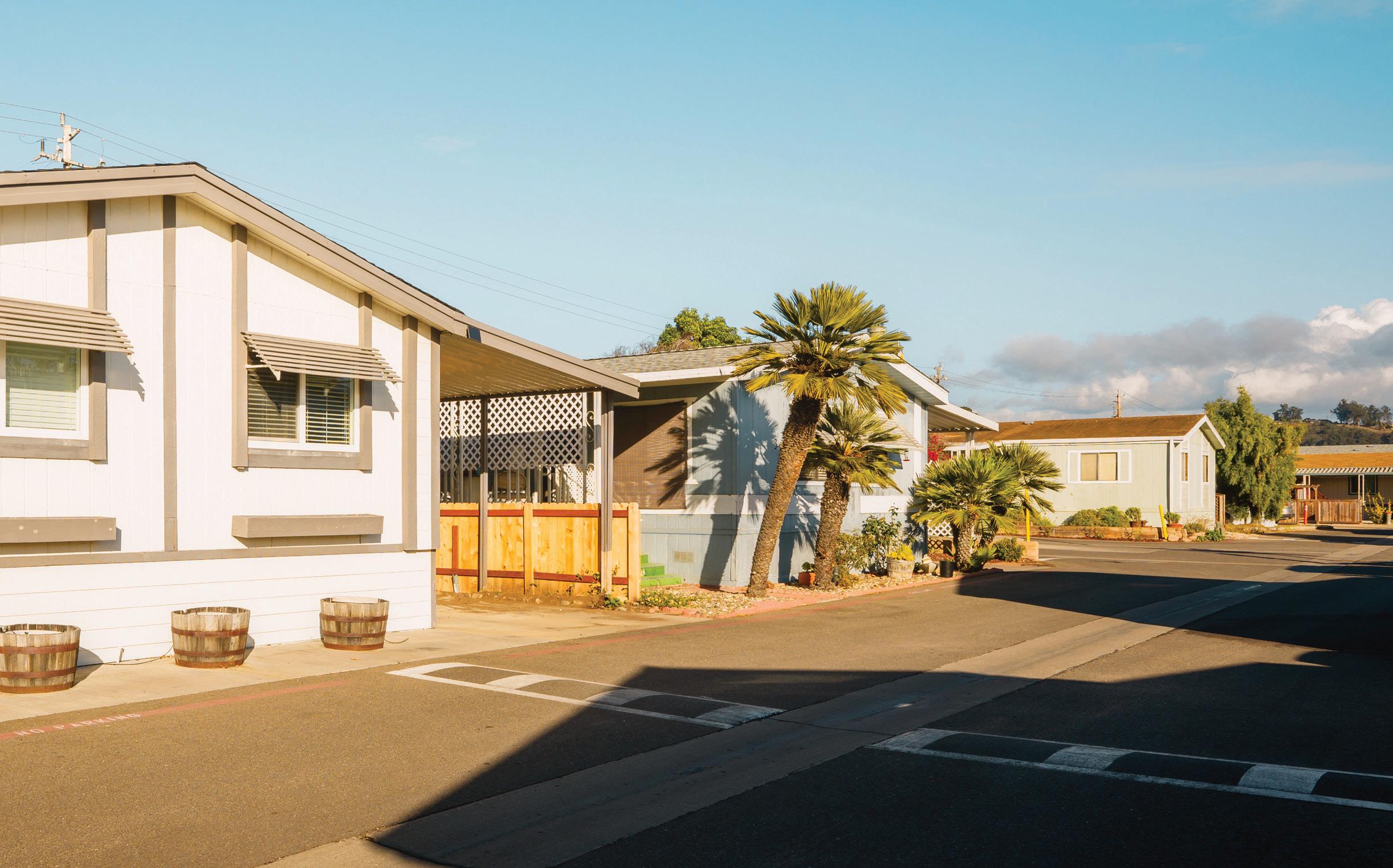
There are opportunities to improve access to traditional loans, and the panelists pointed to three key policy opportunities to modernize the lending process, improve its efficiency, and expand access to—and the quality of—loans: Reduce hurdles for mortgages by updating titling practices: Mortgage financing—which tends to have the lowest monthly payments (because of lower interest rates and longer repayment terms) and strongest consumer protections compared with other types of financing—requires that a home is titled as real estate. But in most jurisdictions, there are significant barriers to manufactured homes being titled as real estate. State lawmakers could consider ways to modernize laws to reduce hurdles for real estate titling and thus expand eligibility for traditional mortgages to more homebuyers and refinancing for current borrowers.
Expand access to home-only loans: The Federal Housing Administration (FHA) could improve options for homebuyers, and the availability of loans, by finalizing updates on its existing manufactured home loan program (Title I)—specifically by aligning this program with standard mortgage policies. In addition, Fannie Mae and Freddie Mac, the government-sponsored enterprises that buy mortgages from lenders, could also begin
purchasing home-only loans. These actions could improve efficiency and lender adoption so that credit-ready borrowers who own their homes as personal property could access better FHA loans for manufactured homes than what is currently possible. Ensure reasonable protections: Federal and state policymakers could evaluate current laws regarding contract financing to ensure that consumer protections are sufficient and include manufactured home owners.
Policy changes at the state and federal levels could make it easier for buyers of modern manufactured homes to obtain better financing and allow them to refinance. This could increase the number of borrowers who can afford to buy and remain in a manufactured home.
Seventy-six percent of current manufactured home borrowers say they own both their land and their home, like any other single-family home borrowers. However, one-third of this group still has their home titled as personal property rather than real estate, making them ineligible for mortgages.
To expand access to mortgages and improve affordability, state policymakers could consider updating manufactured home »

titling laws to make it easier for home owners and buyers to title their homes as real estate, unlocking access to mortgages for families pursuing homeownership.
“Manufactured home financing is the major holdback. As significant as the use of manufactured homes as a source of affordable housing and homeownership is, if the financing was improved, it would open the floodgate and there’d be even more significant use. It would make manufactured home buying easier, cheaper, and safer.”
Dave Anderson, Executive Director National Manufactured Home Owners Association
For manufactured home borrowers who cannot title their home as real estate under current state laws — which is often the case for homebuyers on family, tribal, rented, or resident-owned community (cooperatively owned) land — the next best option is a home-only loan. Research shows that home-only loans can be especially challenging to get, and, because there are no federal programs that help lower costs and increase loan availability similar to those for mortgages, most lenders can’t make homeonly loans at scale.
“I think it’s really sad that the mortgage industry has got resources beyond what we have on the home-only side,” Land Home Financial Services President of Affordable Housing Paula Reeves said. “The home-only side is left to private money and equity groups. If we had a robust secondary market, I do believe we could offer homeownership to more Americans, and I just think it has got to happen.”
FinRegLab, an independent nonprofit research organization, recently interviewed manufactured home experts and published a report noting the importance of updating policies for FHA’s Title I manufactured home loan program, which is designed to insure home-only loans similarly to how FHA mortgage programs insure mortgages. In 2024, a couple of key changes were made — including increasing the loan limits for the first time since 2009 and reducing lender net worth requirements to more closely mirror mortgage policies. Industry experts note the need to make additional updates, aligning Title I policies with standard mortgage practices such as loan documentation
policies; allowable fees; and permitting lenders to analyze a loan application using automated, rather than manual, underwriting.
“Moving forward, we need to get more data so that lenders can be more confident in how they price these loans and how they structure their business models. A great way to do that based on our research would be for FHA to work collaboratively with lenders, to do some more pilot programs, maybe to fund some research to pull some data from existing sources. FHA programs exist, and there are ways to make it better and more attractive for lenders to participate,” FinRegLab Policy Adviser Nick Bourke said. MHV
Rachel Siegel is a senior officer and Linlin Liang is a principal associate with Pew’s housing policy initiative, conducting research and analysis on the availability, safety, and affordability of mortgages and on alternative financial arrangements for purchasing manufactured homes and other low-cost forms of housing.


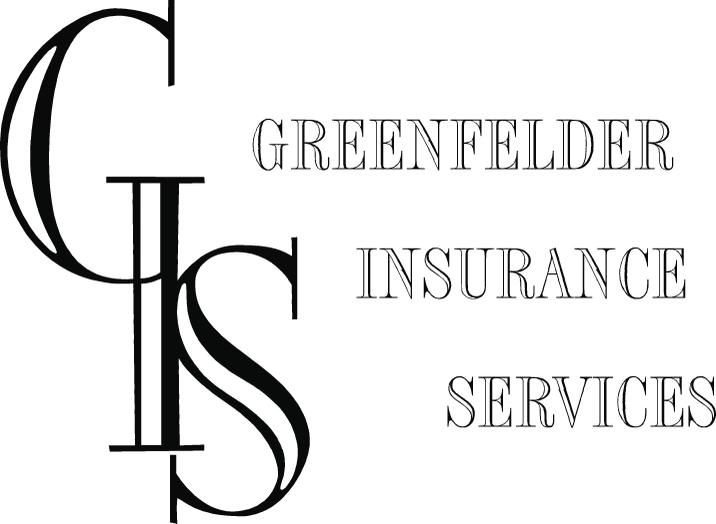
















If a customer on the West Coast was interested in a new home on the Gulf Coast, how might that transaction go? How pricey would it be, how long would it take?
Frank Guido, Andrew Lett and team, with Aareas Interactive, have some burgeoning ideas about the experience that customers receive.
The experience provides a realistic rendering of a home, neighborhood, or community of interest to the customer,” Guido said. “It gives an automated tour or allows the user to conduct a virtual tour at their own pace.

“During the tour, the customer can swap out finishes, materials, color schemes, and even turn the clock or change the season to see how the light of day and afternoon shadows affect the look of the home inside and out,” he said.
And it’s all very photorealistic.
The software’s user can test the same home or different home designs within a development or community as it would appear adjacent the tennis courts, alongside the general store, or on a wooded lot.
“Someone can make choices from California about how they might place a home in a community in Louisiana,” Lett said.
It’s customized purchasing, with a mind toward the end user, the homebuyer, and that single person’s unique place in the market.
The founders have a background in the industry, having worked with Oakwood Homes before it was purchased by Clayton, before Clayton was a Berkshire Hathaway company.
Like many other organizations in the off-site built space, Aareas Interactive took a hiatus and focused on other asset classes — single-family homes and condos — when the manufactured housing industry was down.
They returned with enhanced technology about two years ago.
“At that time it was a sales office and the following year we had everything online,” Lett said of the company’s previous tenure.
The Toronto-based company and its partners, in late 2024, were honored with the Gold Muse Award and the Silver Muse Award, which recognize excellence in design, innovation, and creativity across various industries worldwide. There were more than 17,200 entrants competing for the prize.
“These accolades showcase our steadfast commitment to innovation in design, technology, and customer experience,” Guido said. “Our projects reimagine the home design and purchasing journey by integrating cutting-edge virtual reality and immer-
sive technologies, enabling our clients to offer their customers highly engaging and interactive buying experiences.”
Aareas in recent years has been working with builders at the corporate and plant level to log their homes and floorplans. All the new functionality is applied to geography, within a development, and with considerations for home dimensions in relation to a particular lot size and local rules.
“Again, you can tour at your own speed or you can do an auto-tour,” Lett said.
Guido said Aareas allows a home seller to have 10 home designs open for tours in a community, and at an active, in-person sales center where the customer could run through home options and design choices, but also be able to take that experience home with them and continue to work toward the precise design that they desire.
“The customer can completely configure the experience any way they want,” Guido said.
The program ties all of the customers’ needs together and avoids many of the common problems that arise during the standard sales experience, which speeds up the time to market. The home gets placed more quickly, the home seller moves to the next deal, and the new home owner is in place, exactly where they want to be… right down to the final detail.
“If the buyer has chosen a gas stove it won’t let you forget the gas line and it won’t let you buy a connection for an electric stove,” Guido said. “If you choose a three-hole sink it will automatically provide you a quote that includes hardware for a three-hole sink.” MHV








• $2.5 billion in total enterprise value
• 139 communities, 26,300 homesites, 12 states*
• Housing approximately 22,000 families
• 8,000 total acres, 3,900 acres in Marcellus and Utica Shale regions



As a publicly traded REIT (NYSE:UMH), we have been providing quality a ordable housing since 1968. Our portfolio provides high pro t margins, recession resistant qualities, reliable income streams and the potential for long-term value appreciation.


* Includes Duck River Estates and River Blu Estates, two newly constructed communities in 2024, and Sebring Square and Rum Runner, two communities owned in a joint venture with Nuveen Real Estate in which the company has a 40% interest for 2024.
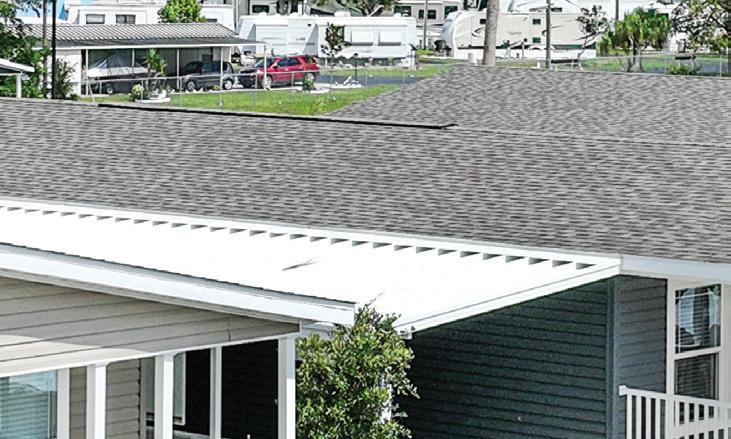














Property featured: SEBRING SQUARE, Sebring, FL Homes for Sale and Rent. Take the Tour Today! For more information, visit www.umh.reit or contact ir@umh.com







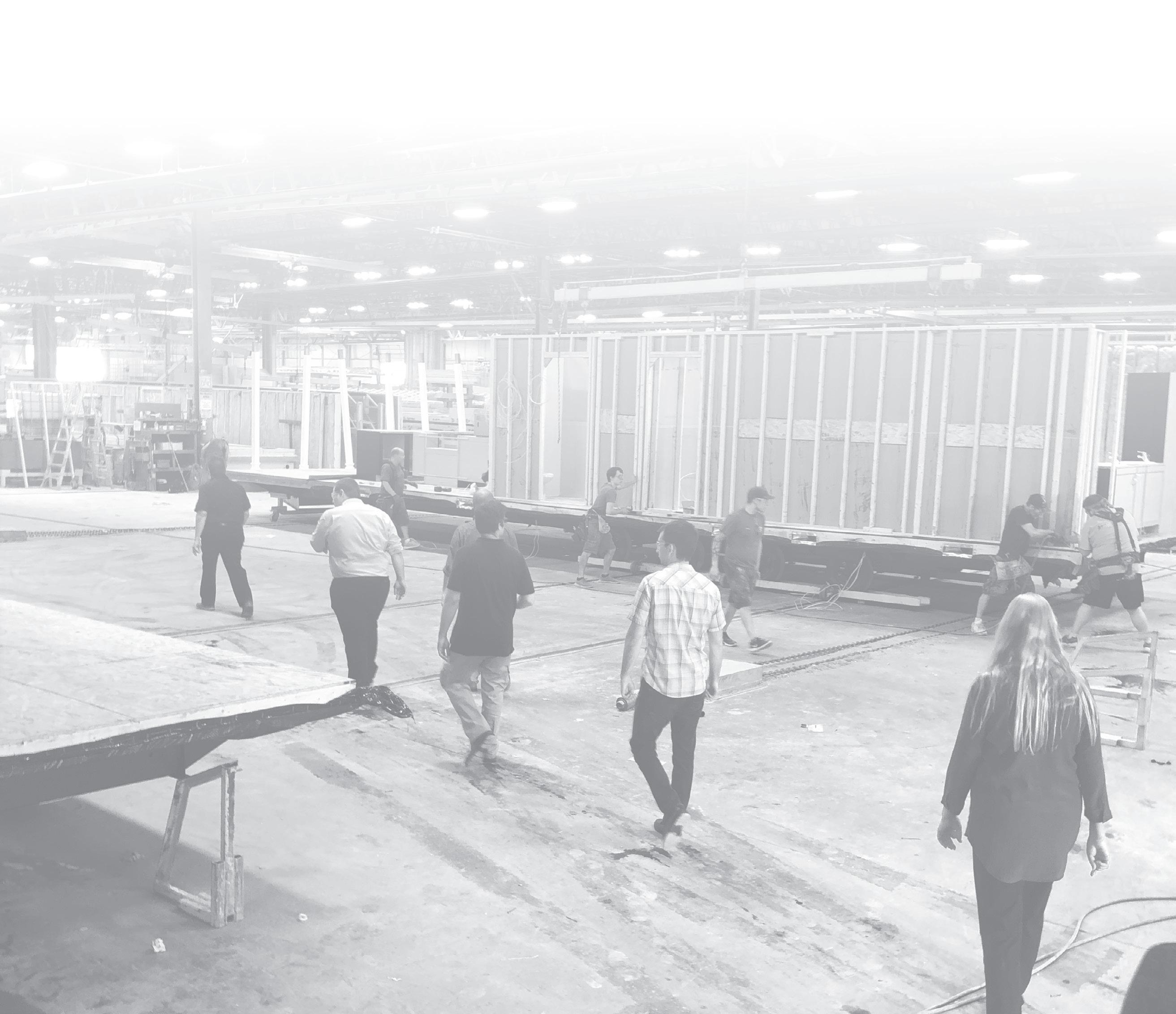
This is your opportunity to tour the region’s leading manufactured home building facilities, meet with factory representatives, see the latest innovations in engineering and construction, and sharpen your sales, marketing and operations skills with informative seminars from industry experts.
WHO SHOULD ATTEND?
• Retailers & Community Owners
• Property Managers
• Sales Personnel
• Marketing Team Members
• New Employees WHY ATTEND?
• Stay Ahead of Your Competition
• Build a High Performing Sales Team
• Pick Up New Marketing Tips and Tactics
• Understand the Latest Trends and Buyer Preferences
• Purchase the Right Homes for Your Buyer and Market August


To what degree do you feel your state is a bellwether for industry trends on the national level? How so?
Wisconsin is not what I would call a bellwether or trendsetter. If the industry has a downturn, Wisconsin usually lags a bit behind and doesn’t often go as deeply as other states. We also lag behind on the upturns of the industry. We do however, have tremendous capacity for growth and I’m hoping that we can capitalize on that capacity over the next few years.
—Wisconsin Housing Alliance Executive Director Amy Bliss

I think Michigan is probably the bellwether for the industry trends on a national level. Not only are there 1,200 manufactured housing communities in the state, but many of the industry’s largest stakeholders (Champion, Sun, RHP for example) are headquartered in Michigan.
Michigan Manufactured Housing Association
President/CEO John Lindley
In Florida, homeowners aged 55 and older accounted for 53.6 percent of homes sold in 2022. The median age of recent home buyers in Florida was 60 years old. This makes Florida a bellwether for retirees and pre-retirees. Age 55-plus homebuyers are a large and important customer base for manufactured housing.
Today, the Florida real estate market is characterized by increased inventory, moderate price growth, and an evolving buyer dynamic. The housing market slowed leading up to the 2024 Presidential election and it has yet to regain traction. While prospects for the Florida housing market are excellent, increases in interest rates, elevated homeowner insurance premiums, and severe weather have kept a temporary lid on home sales. This slowdown is only temporary as Florida’s year-round tropical weather, miles of sandy beaches, diverse natural and cultural attractions, and no personal income tax continue to make Florida a top destination for tourists and homebuyers alike.
Florida Manufactured Housing Association CEO Jim Ayotte
I do not see Virginia as a bellwether for the entire country. In the past, we have suffered less during recessions and fared not as well during booms. We stay fairly even keeled as a middle of the pack player ranked in the low 20’s nationally.
Virginia Manufactured and Modular Housing Association Executive Director Randy Grumbine
What do you feel could be your single greatest opportunity in 2025?
I think our single greatest opportunity in 2025 is putting Advantage and Choice homes in subdivisions and on infill lots.
We must compete with site builders on price and it must be a significant savings to serve the ‘missing middle’ housing crisis. It also needs to be done to perfection.
—Wisconsin Housing Alliance Executive Director Amy Bliss
Require local governments that allow ADUs to accept ADUs built to the HUD Manufactured Home Construction and Safety Standards. The goal is to increase the exposure of manufactured housing to gain support for changing land use policies to create more opportunities for manufactured housing in residential districts. The proposal: Pass legislation amending the Florida ADU statute.
Florida Manufactured Housing Association CEO Jim Ayotte
In 2025 significant opportunities for us include crafting legislation that will expand the by-right placement of manufactured homes for the 2026 session. Also, we are seeing a new paradigm in the retail world… developers entering the space and new ‘retailers’ operating without a retail location doing either spec homes or selling online.
Virginia Manufactured and Modular Housing Association Executive Director Randy Grumbine MHV



At Lument, our goal is to deliver certainty, not surprises. We have the experience to spotlight potential roadblocks and the expertise to avoid them. And by investing in technology capable of delivering rapid response times and transparency, we can cut days off the process. When you work with Lument, you’re always a step ahead.


The Biloxi Manufactured Housing Show in March hosted an industry finance panel moderated by Chris Nicely of ManufacturedHomes.com, with a trio of engaged panelists discussing the challenges and opportunities facing the continued development of Title I home loans.
The panelists — Teresa Payne, from HUD, Paula Reeves from Land Home Financial Services and a representative for FHFA, and MHI’s Lesli Gooch — came to consensus on a variety of issues, notably that much progress has been made in the HUD code, that Title I loans, including chattel loans, need to be managed in the same manner as conventional Title II offerings, and that all of the industry stakeholders need to continue working through federal, state, and local partnerships to aid with education and more favorable zoning laws.
“I ended up in manufactured housing and I wouldn’t have it any other way,” she said. “I am a huge champion of manufactured housing in the building, which is sometimes harder than outside the building.”
Gooch said there is a lot going on in manufactured housing, and that housing needs come up in nearly every conversation.
“Anyone who gets elected right now… what these elected officials are hearing is that housing is too expensive,” Gooch said.
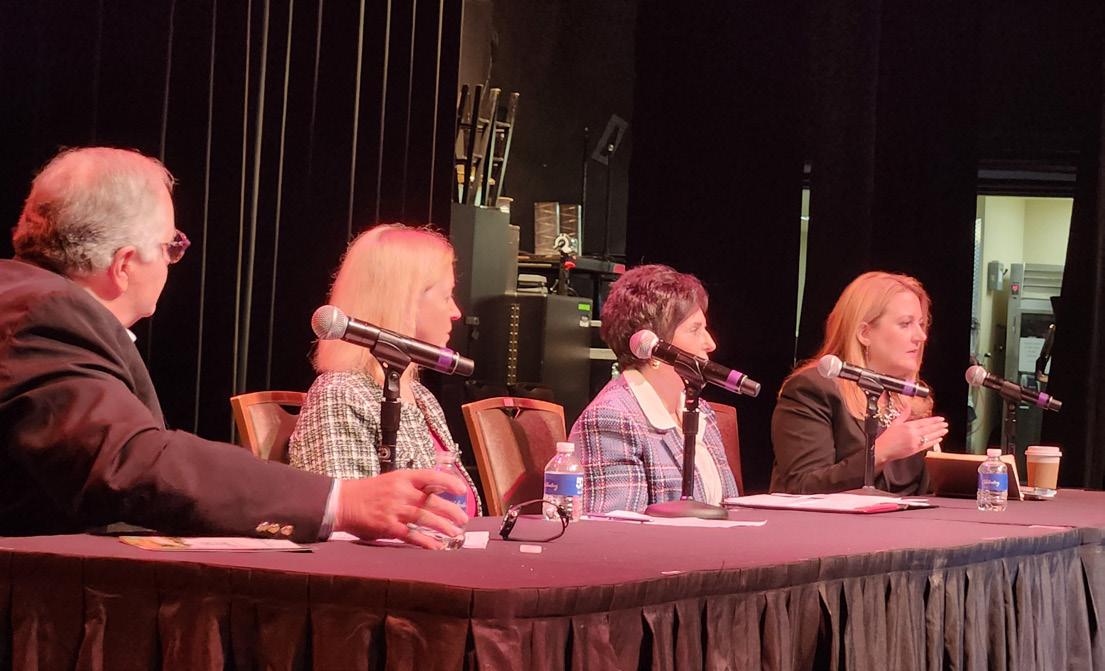
Payne has overseen the most active period of updates to the HUD code in decades, if not ever.
The Manufactured Housing Consensus Committee, which consists of 21 members and meets at least annually, takes industry suggestions that they call “log items”, considers them, and makes recommendations to HUD.
A recent update to the code included attached carports and garages and two story homes, opening the door for a greater quantity of off-site built homes for urban infill.
The 87 updates in September completed the backlog, Payne said, and the next update will be all new, including the possibility for ADUs being entered into the code.
“I do try to help the industry by being creative and innovating,” Payne said.
Expanding attainable housing in every market is what will solve the problem, but housing production needs to be matched by the ability to finance new and existing homes.
FHA Title I loans have come closer to meeting market needs but still are held at bay by being offered only at higher rates than conventional mortgages and are in need of more support through technology and automation.
As it stands, manufactured home loans start at 50 basis points higher than its site-built counterpart.
“I’d like to see us put on a level playing field,” Reeves said. “I want to see less talk and more action. We need an automated underwriting program for Title I.”
Gooch said she is encouraged by the new leadership at HUD and FHFA.
“I am so excited about Secretary Turner, but I’m also excited about Bill Pulte at FHFA,” she said.
The industry needs to continue to design, build, and collaborate.
“They want to hear what we have to say about the products we have that we offer the consumer,” Reeves said of local governments. “We have to find some common ground.” MHV

With detailed rent, occupancy and community attributes for nearly 200 markets nationwide, Datacomp has the information the manufactured housing industry relies on to locate and evaluate opportunities. Get the insights you need in today’s competitive market and continue to grow your portfolio with confidence.

FBy George Allen, CPM Emeritus, MHM-Master
ifty years ago they were mobile home parks, or worse – trailer parks. Today, they’re land-lease communities, or simply communities. These are also recognized as the manufactured housing industry’s unique commercial real estate component and income-producing property type.
Through the decades, and still in some circles, they’re manufactured home – or housing — communities.
So, what about the management of mobile home parks/land lease communities; does that have a history as well? Yes, but not as documented and valued as other forms of residential multifamily management, like apartments and condominiums, with their instructional texts and training programs.
For example, the text “Mobile Home Park Management” published in 1988, was one of only two property management texts ever published on the subject.
The other 1988 PM text, Managing Mobile Home Parks, authored by the late Steve Pappas of Apollo Properties, via the Institute of Real Estate Management, lasted just one printing. Today, both 1988 PM texts are archived in the RV/MH Hall of Fame library in Elkhart, Indiana.
Interestingly and unfortunately, there have been no new PM texts during the past 37 years!
On a personal note, when I started managing four underperforming Midwest mobile home parks in 1978, I knew of no PM books, training, or resources from which to learn how to best manage this property type. So I traveled to a couple showcase properties in the south, observed, and started rehabilitating my mobile home parks by applying what I’d learned.
At this point we’ll dig into one of the surviving 1988 paperbacks describing the manufactured housing industry, and how to manage a mobile home park.
The Foreword to “Mobile Home Park Management” was penned by then industry icon Dan Gilligan, president of the National Manufactured Housing Federation, a national trade advocacy entity representing state-based manufactured housing trade associations. However, in 1991 the federation was absorbed into the Manufactured Housing Institute, as a division of the body.
And from the Preface: “…virtually all mobile home park owners and managers learn ‘on the job’” and I was not an exception. Institute of Real Estate Management and National Apartment Association multifamily community PM classes notwithstanding, my best education was with residents I faced
across a desk or in the doorway of their mobile home.
At what point and why did the manufactured housing industry move from mobile home park to manufactured home community? The change began during the 1970s when the federal government adopted the term as the official moniker for our product. Then, during the early 1990s, as several property portfolio owners/operators prepared to go public as real estate investment trusts, a national survey of subscribers to Manufactured Home Merchandiser magazine suggested a similar description for communities. The first official published use of “manufactured home community” occurred in the J. Wiley & Sons 1993 classic “Development, Marketing & Operation of Manufactured Home Communities.”
The 1980s property management text stated “The on-site manager, resident manager, or management team (most commonly, a husband and wife team) supervise the day-to-day activities at their assigned or owned property. The on-site manager of a commercial property rarely lives there, but maintains an on-site office during regular business hours. The resident manager…almost always lives on or nearby the property. Some states require on-site managers of mobile home parks to live on the premises.”
Today, given that the majority of land lease communities contain fewer than 100 rental homesites, sole proprietor and husband/wife teams prevail.
Plan or MAP
The MAP management tool, introduced to community owners/operators
usually within a written memorandum on company letterhead, is a list of tasks and target completion dates that are especially timely and helpful for managers taking over a new property or starting property rehabilitation. First time MAPs often contain dozens of “to do” tasks and are frequently used as job performance indicators. By the time action items are accomplished, a MAP may contain as few as a half dozen tasks yet to be finished.
The Accredited Community Manager national certification program began in 1991 as a joint effort between MHI and the Manufactured Housing Educational Institute — the latter originally officed in Bloomington, Indiana, later moved to Arlington, Virginia as part of MHI. While ACM was the realty asset class’ first formal training program, and continues to this day, it was joined a decade later
by the Manufactured Housing Manager program hosted by EducateMHC.
One thing hasn’t changed until just recently; “Mobile Home Park Management”, in its second chapter describes “housing constructed at a location other than the site of occupancy” as being “panelized homes, modular homes, and manufactured homes.” Only in recent years has this trio of factory-built housing types been given its’ own moniker, that of “offsite construction” or “off-site built”. At present, offsite construction starts are not included in the U.S. Census Bureau’s monthly count of single-family residential. Some opine that to include offsite construction in that official count would make for a more accurate statistical profile of total housing starts across the U.S. today.
Community owners/operators in the 1980s era were only beginning to »
Where we’re committed to:
Making a complex loan process smooth and simple. Crafting lending programs with your needs in mind.
Improving the lives of the people we serve.

Visit our booth at MHI Congress and Expo to learn more and enter to win our giveaway!
For program information or questions, contact us at: MHinfo@CreditHuman.com
think of additional profit centers for their properties. Specifically “…generate additional income through in-park sale of new mobile homes; resale home appraisal and brokerage fees; homeowners insurance sales and service; parts and service income related to sales; and home repairs marketed to residents and others outside the community.”
Today, most of these suggestions are relatively commonplace among land lease communities.
Now, here’s an interesting state of affairs relative to mobile home parks. “Mobile home community accounting is the last bastion of manual bookkeeping among the variety of residential and commercial property types. This is probably because the vast majority of mobile home communities are family-operated, ‘Mom & Pop’ operations – small in size and very basic. Computerization has arrived,
however, and will in time, become as common with mobile home communities as it is with apartment, co-op, and condominium management,” according to the text.
Coincidentally, London Computer Systems in Ohio, in 1988, at one of the first Networking Roundtable events, introduced Rent Manager to this realty asset class. And today, the rest is history, with several software firms marketing their wares to community owners/operators.
Finally, chapter nine of the text describes a homesite rental philosophy common at the time. “…managers and owners often set their rents and service fees by estimating expenses and then charging enough to cover them and generate modest profits. Careful managers and owners, however, take a more intelligent approach by first researching the local housing market to learn the current
rate structure. A rental rate should be competitive with or slightly ahead of the market unless a vacancy problem exists. In that situation, a rent slightly behind the prevailing rent rates could attract more prospects and more residents.”
There’s still more interesting information in this nearly 40 year-old classic. Skimming through the Community Directory, an appendix, alone reads like a “Who’s Who” of MH industry pioneers. Examples include Ted Boers, founder of Datacomp, Vince Pulsipher, retired NADA executive, insurance pro Opal Barrett, the late Bud Zeman of Zeman Homes, Jerry Connors at MHI, the late Herb Behrend and David Alley, park design engineers of note, and property management pros like Bob Love in Atlanta, Martin Newby in Florida, and the Bessire & Casenhiser team in California. Boca Raton, Florida.



Kurt Kelley President
Land lease communities have come a long long way since these two PM tomes were published way back in 1988. Think rental homesite sizes and emphasis on safe and secure installation of homes, also the presence of computerized bookkeeping almost everywhere. MHV
George Allen is a nonfiction author, internet blogger, and magazine columnist with expertise in manufactured housing and land-lease communities. He also is a retired lieutenant colonel of U.S. Marines, with a combat tour in the Republic of Vietnam and service during Desert Storm. Read his autobiography, “FromSmittyAlpha6 to MHMaven” available via www.educatemhc.com, and also his “Chapbook of Prayer” and “Chapbook of Business Management & Wisdom” as well as other interesting titles. Allen can be reached at gfa7156@aol.com, (317) 881-3815 & GFA c/o Box # 47024, Indianapolis, IN. 46247.
